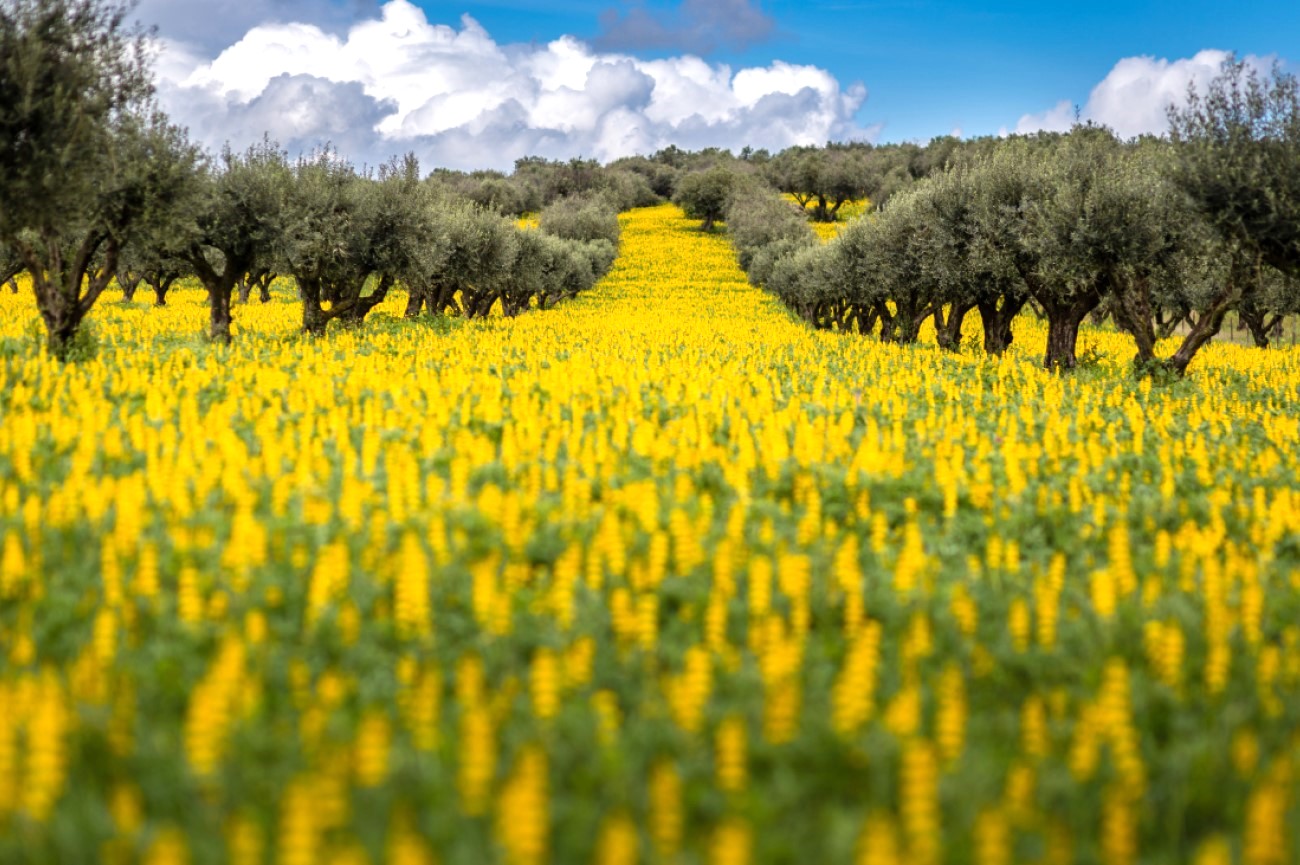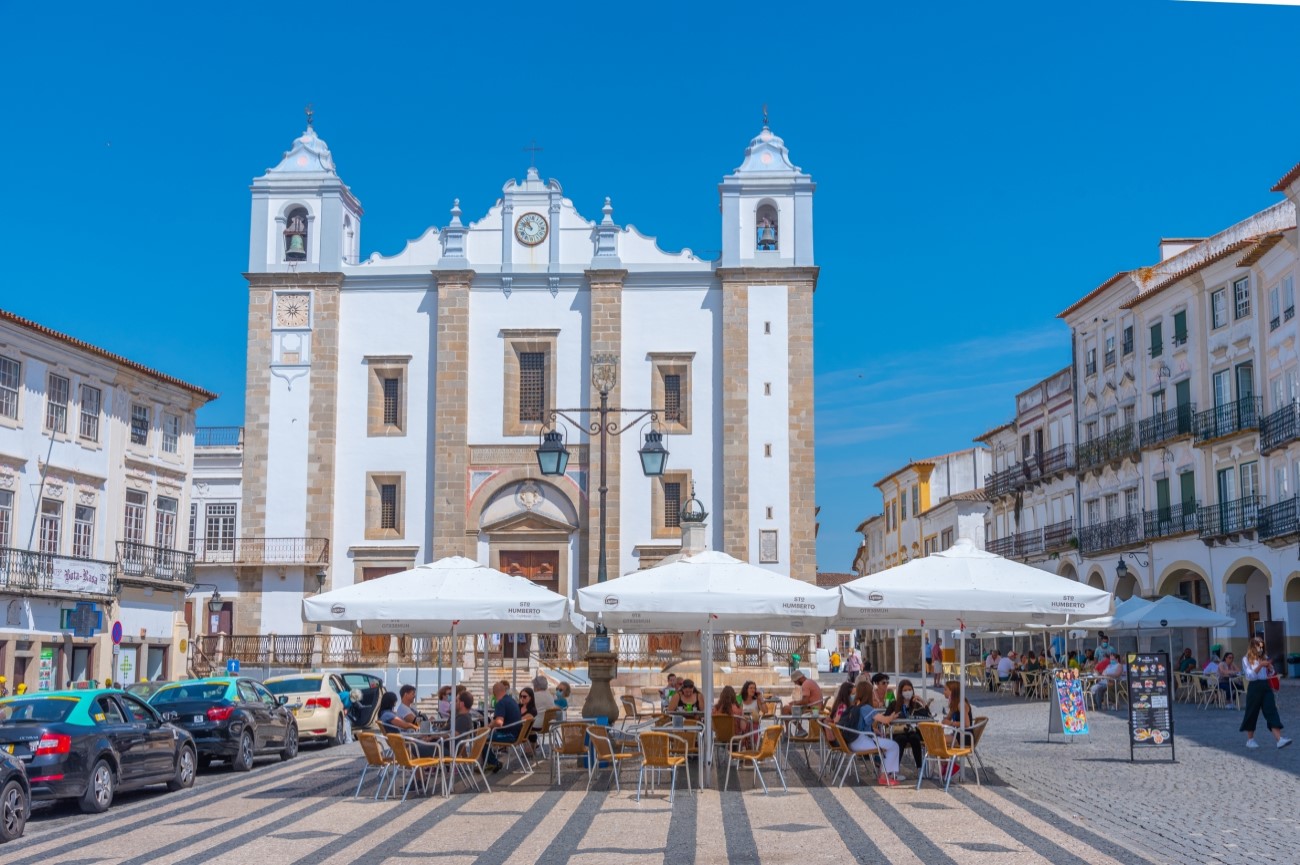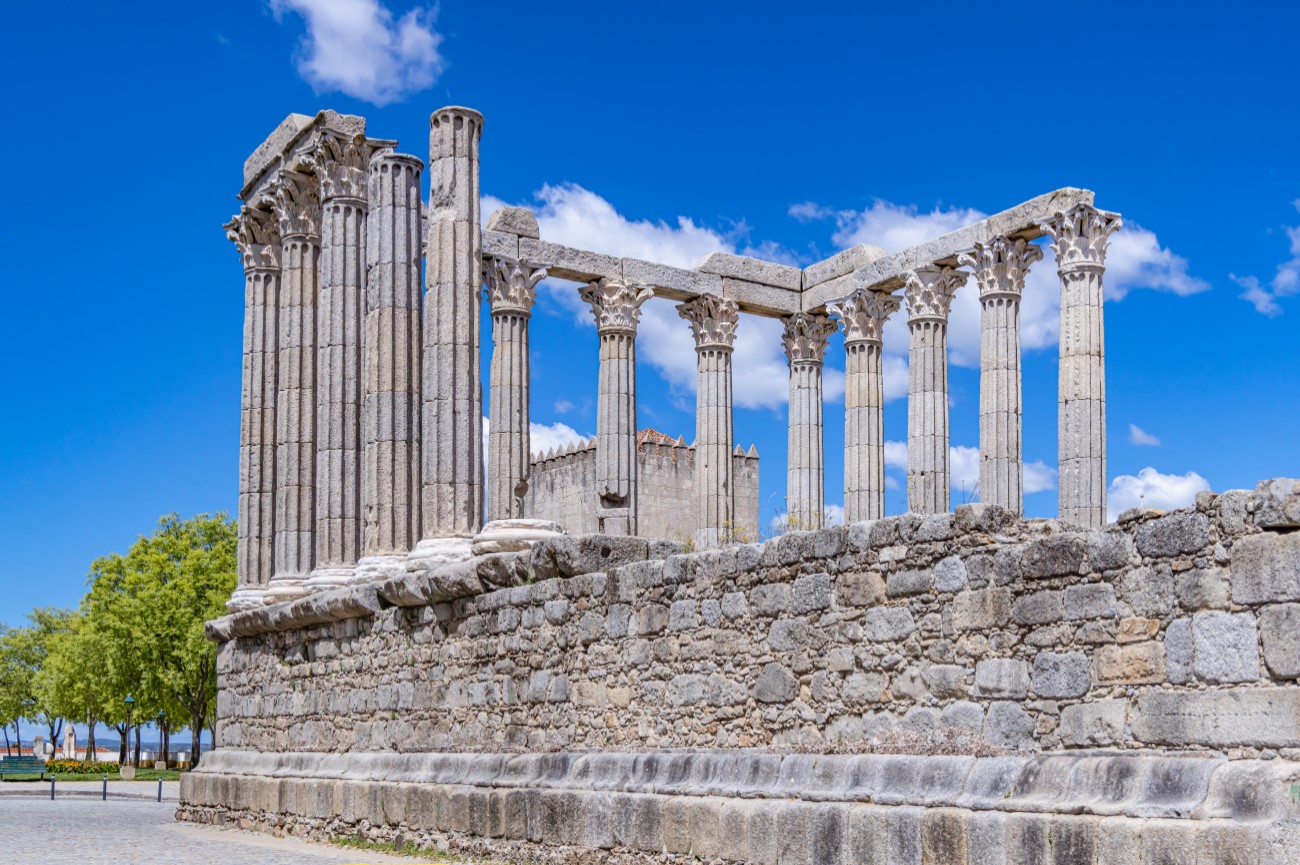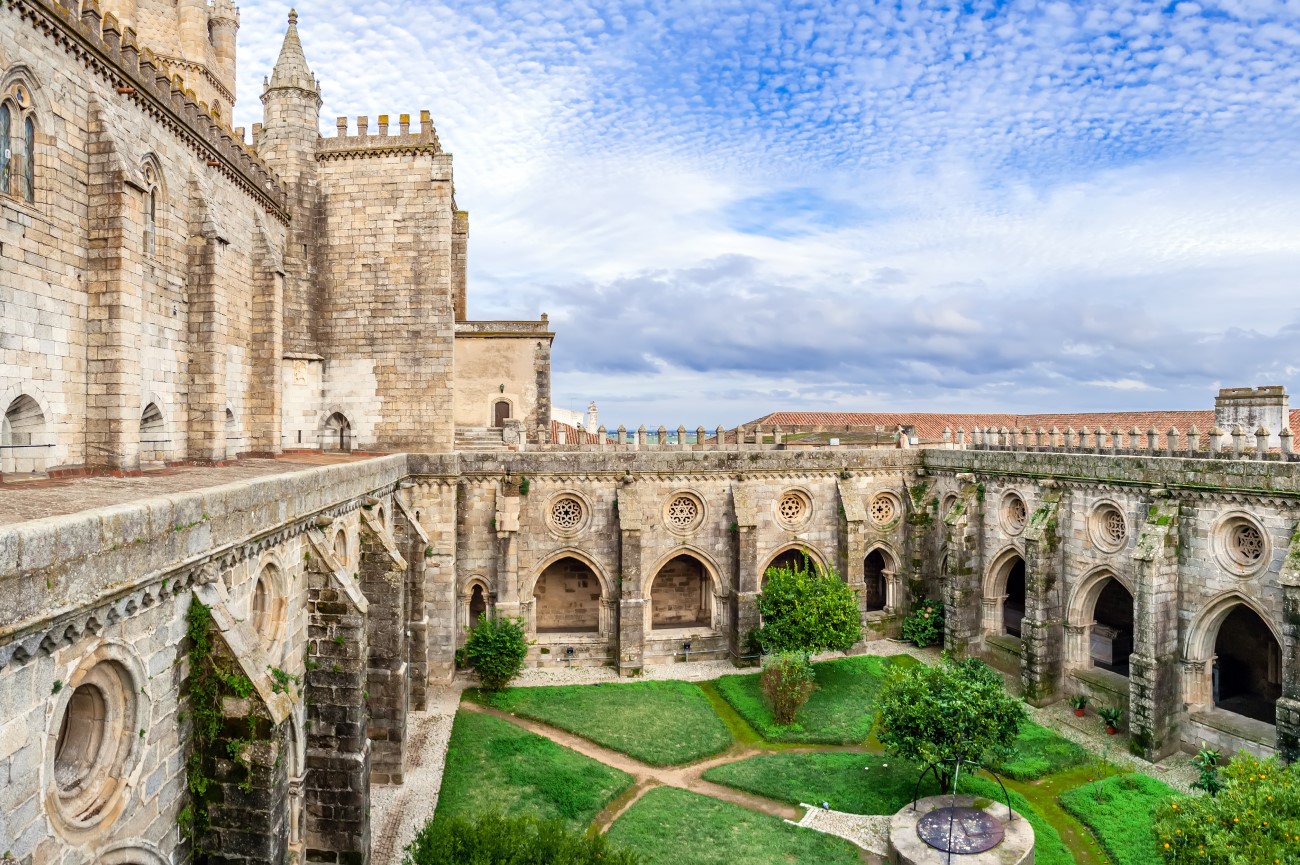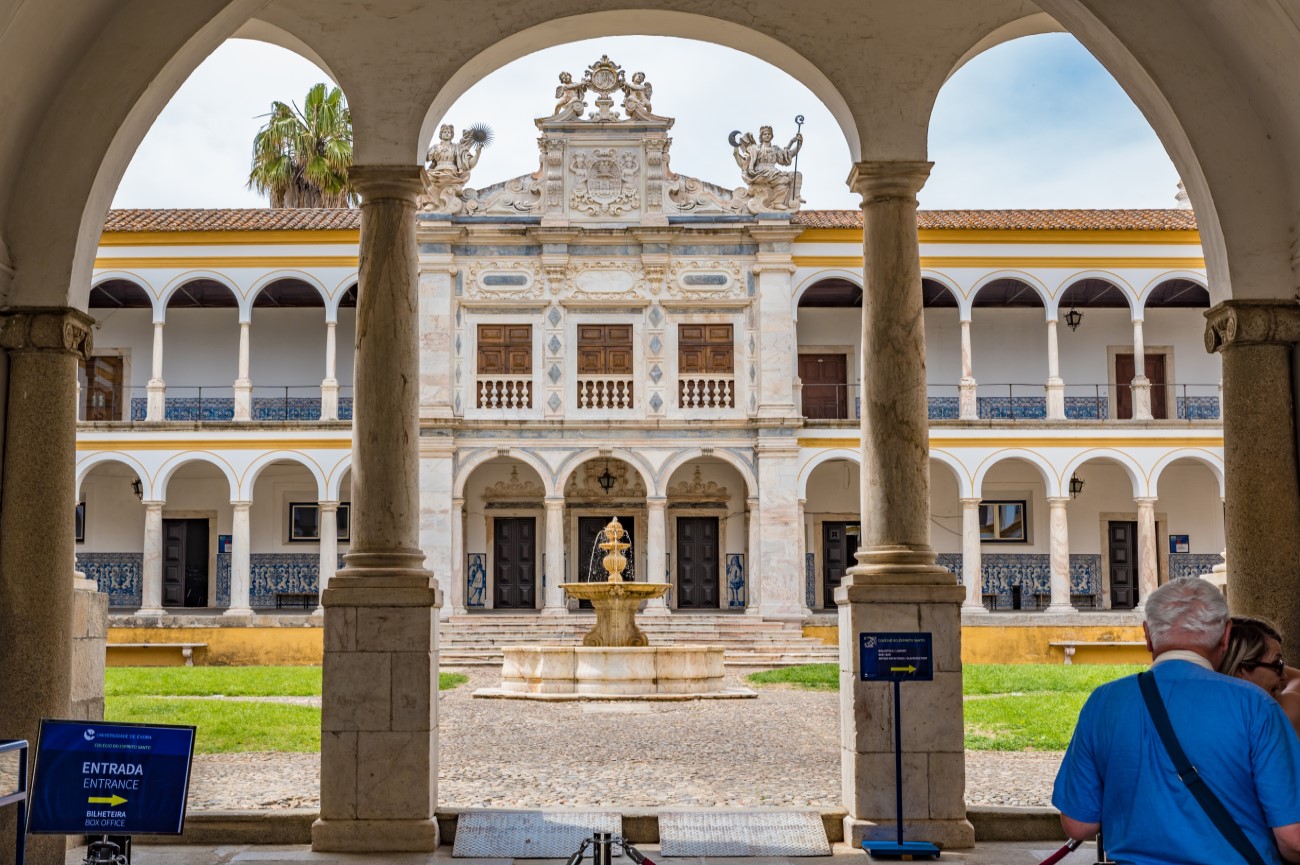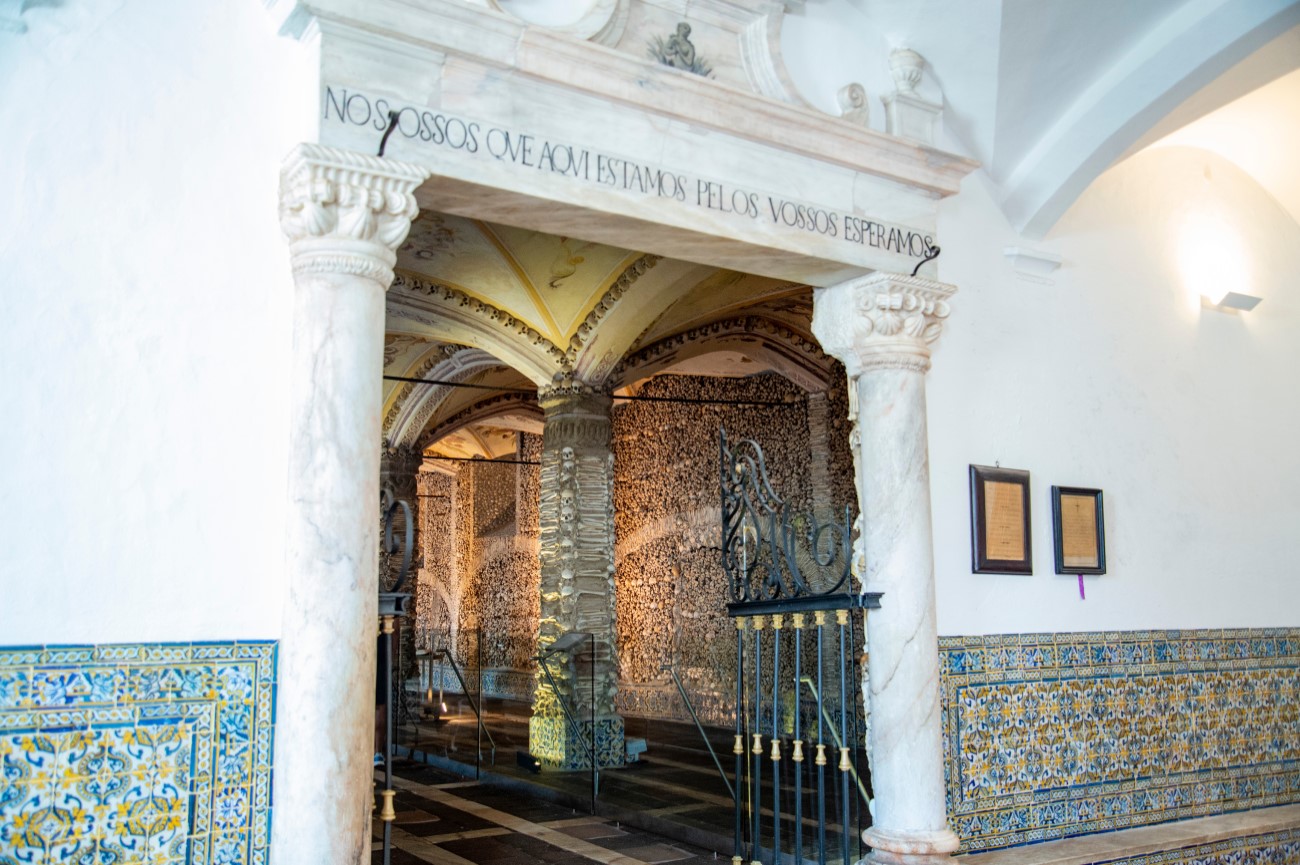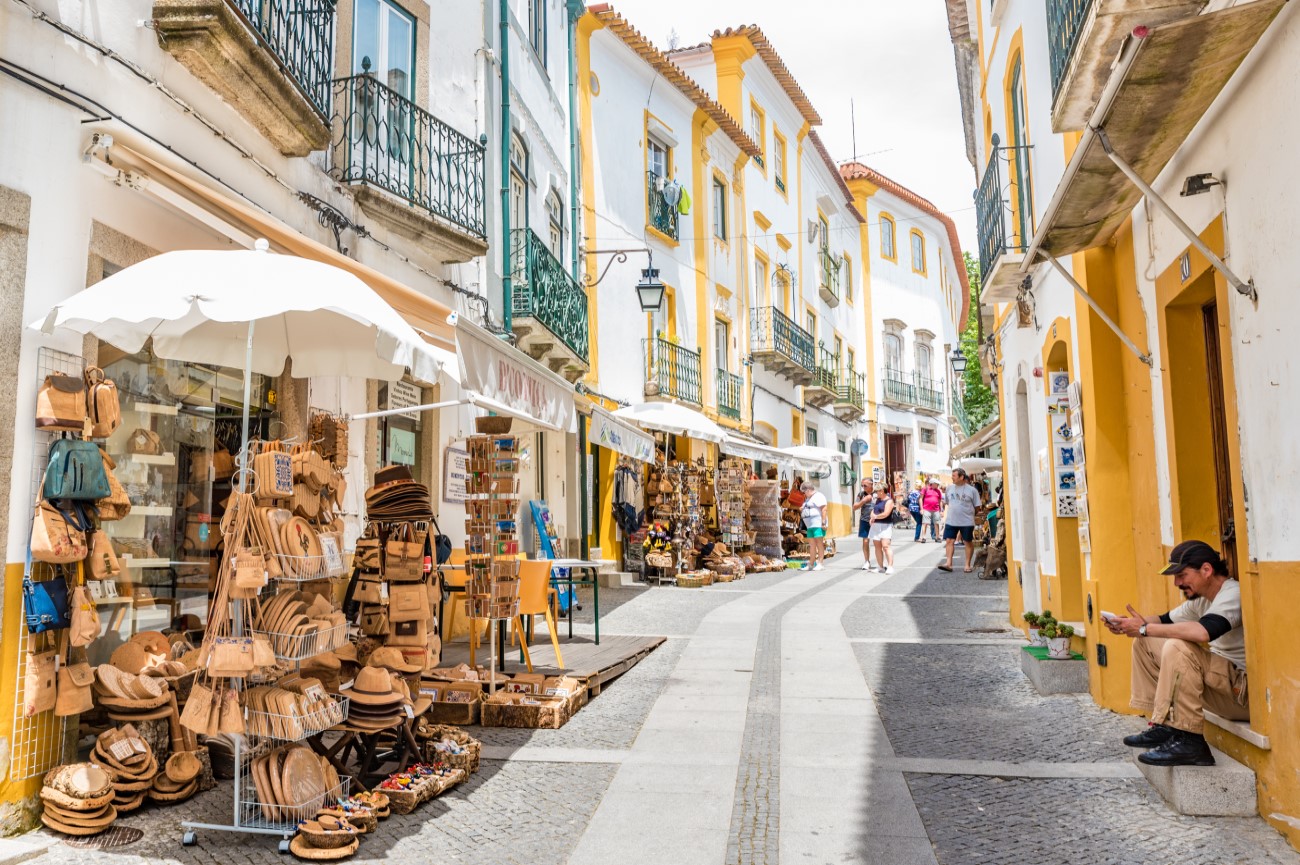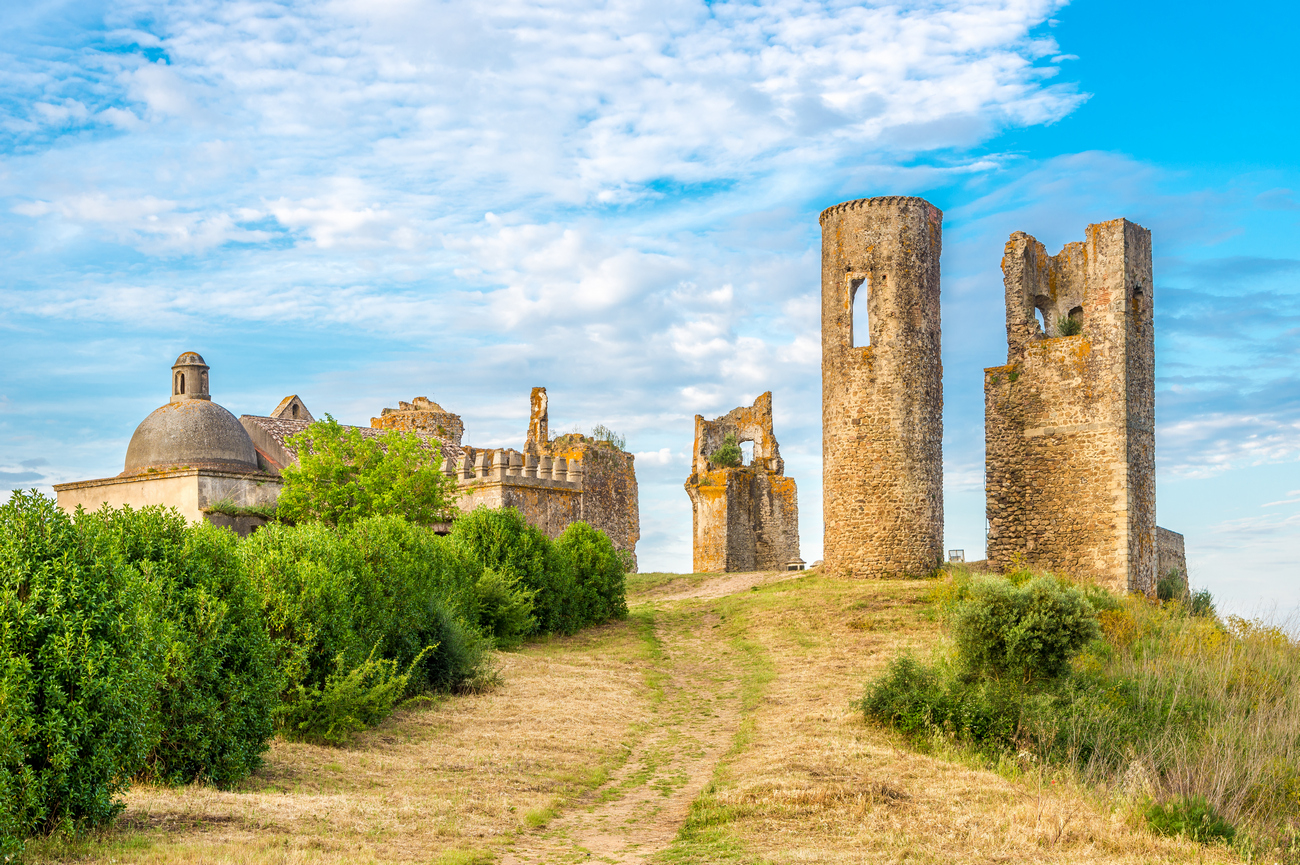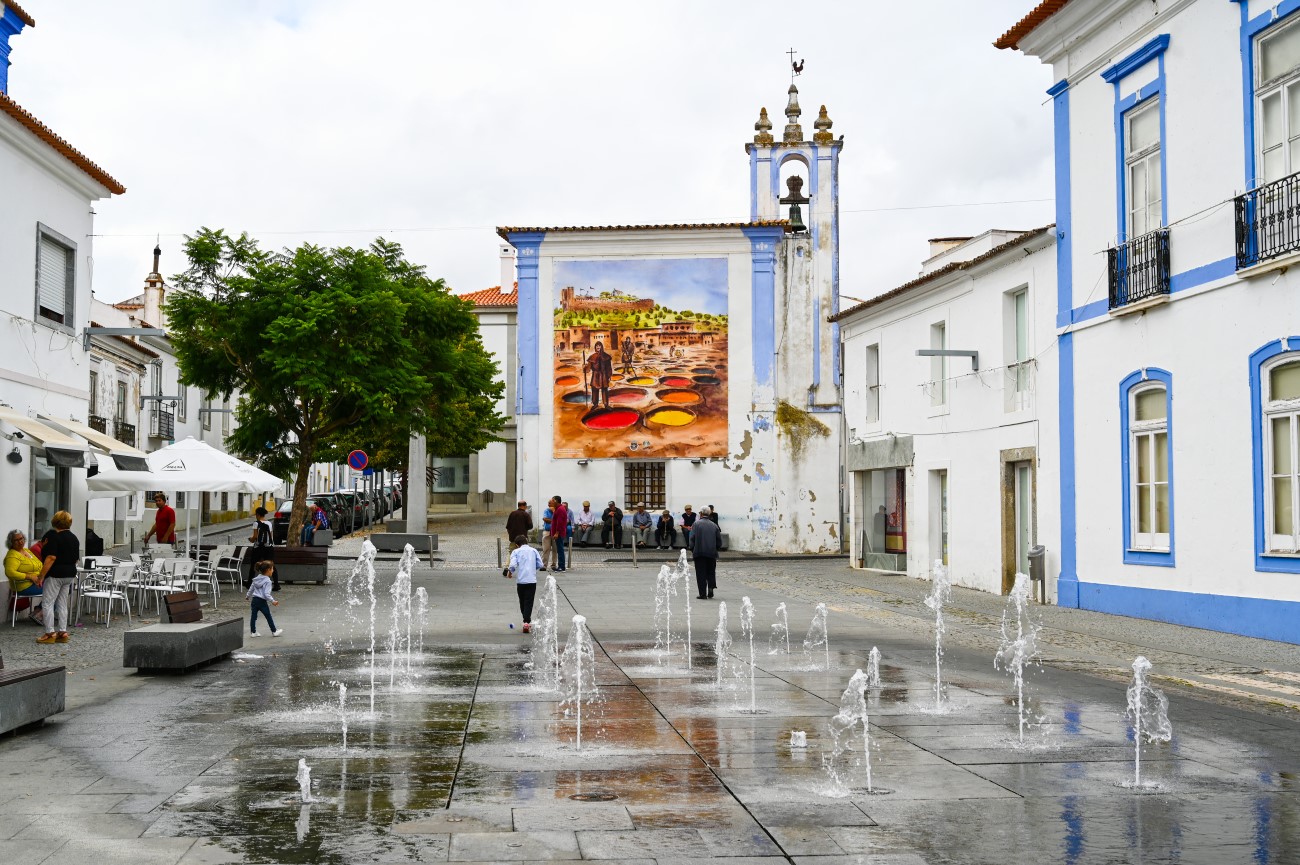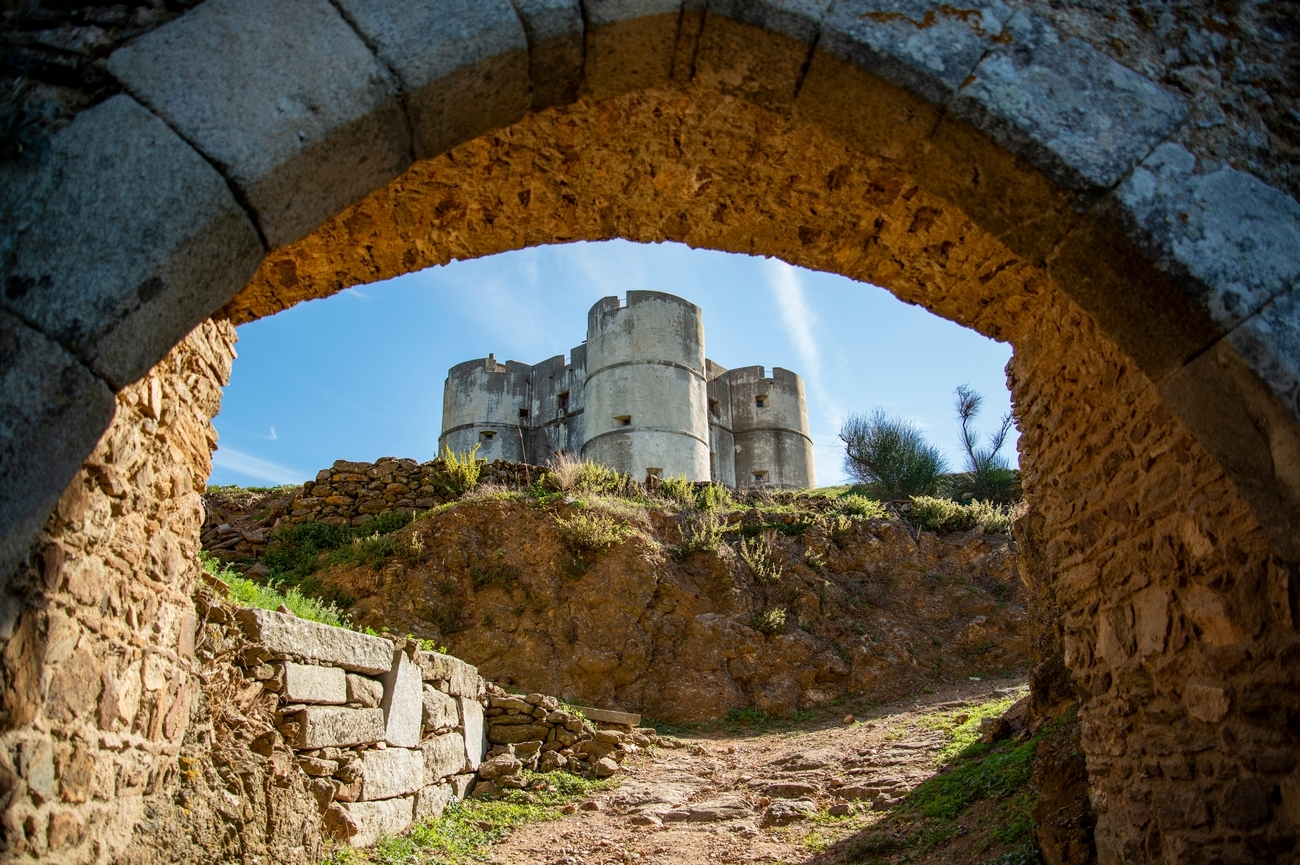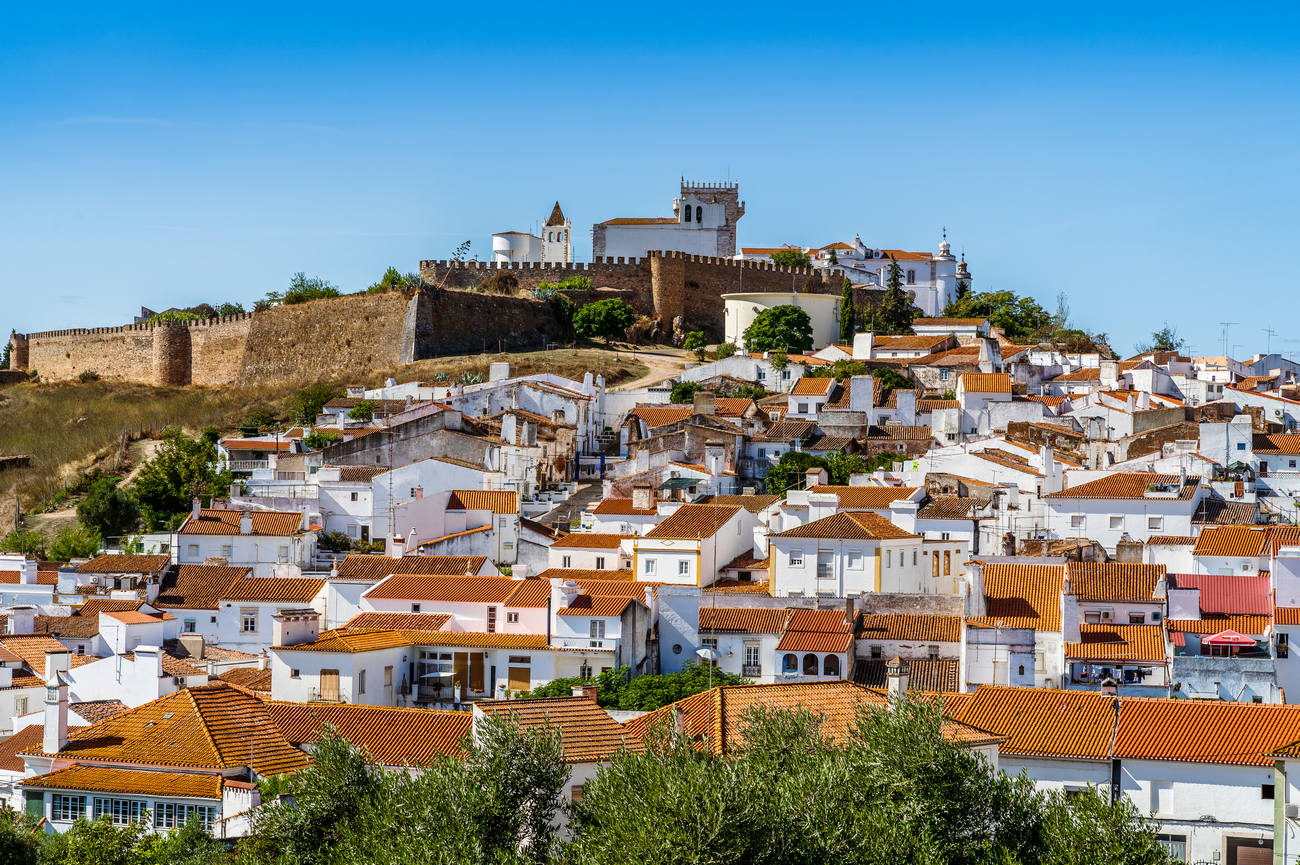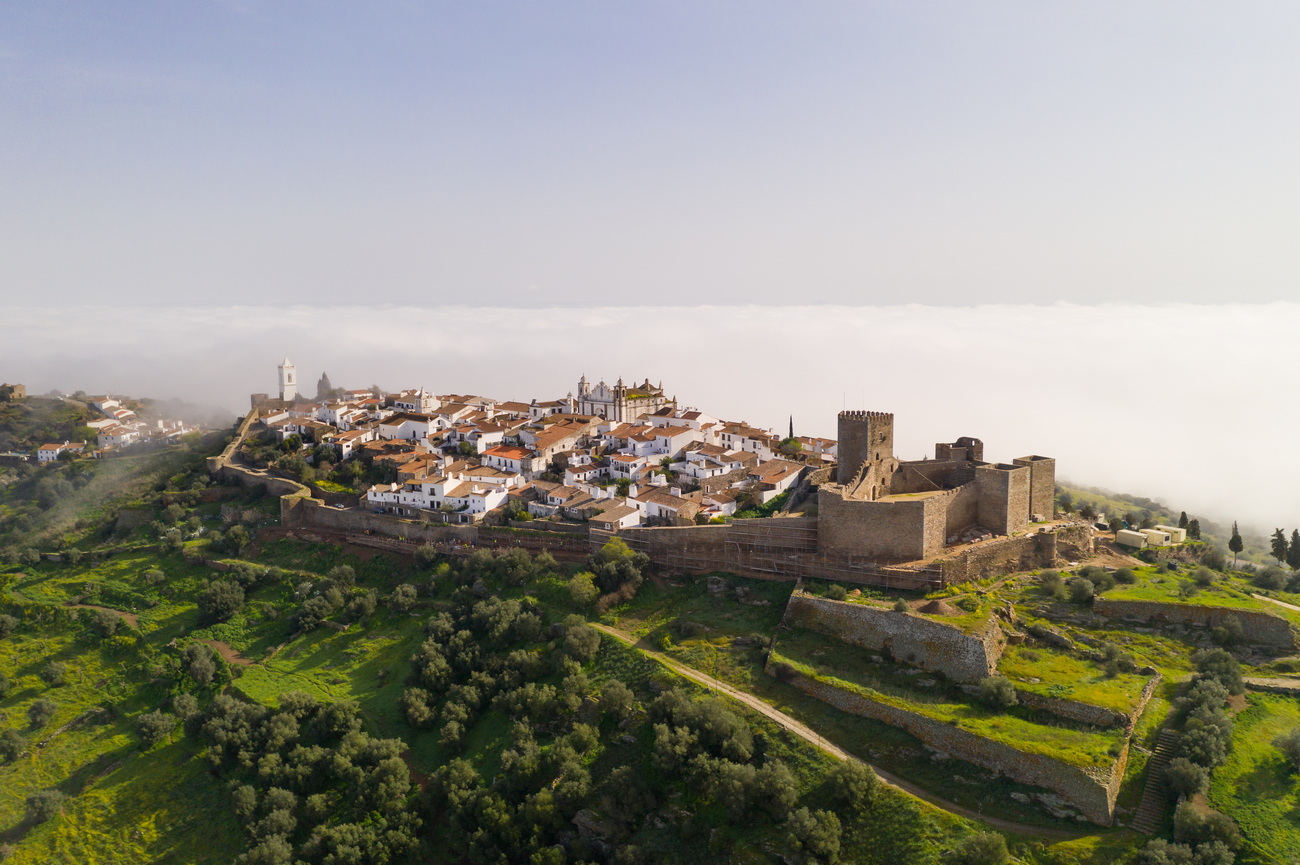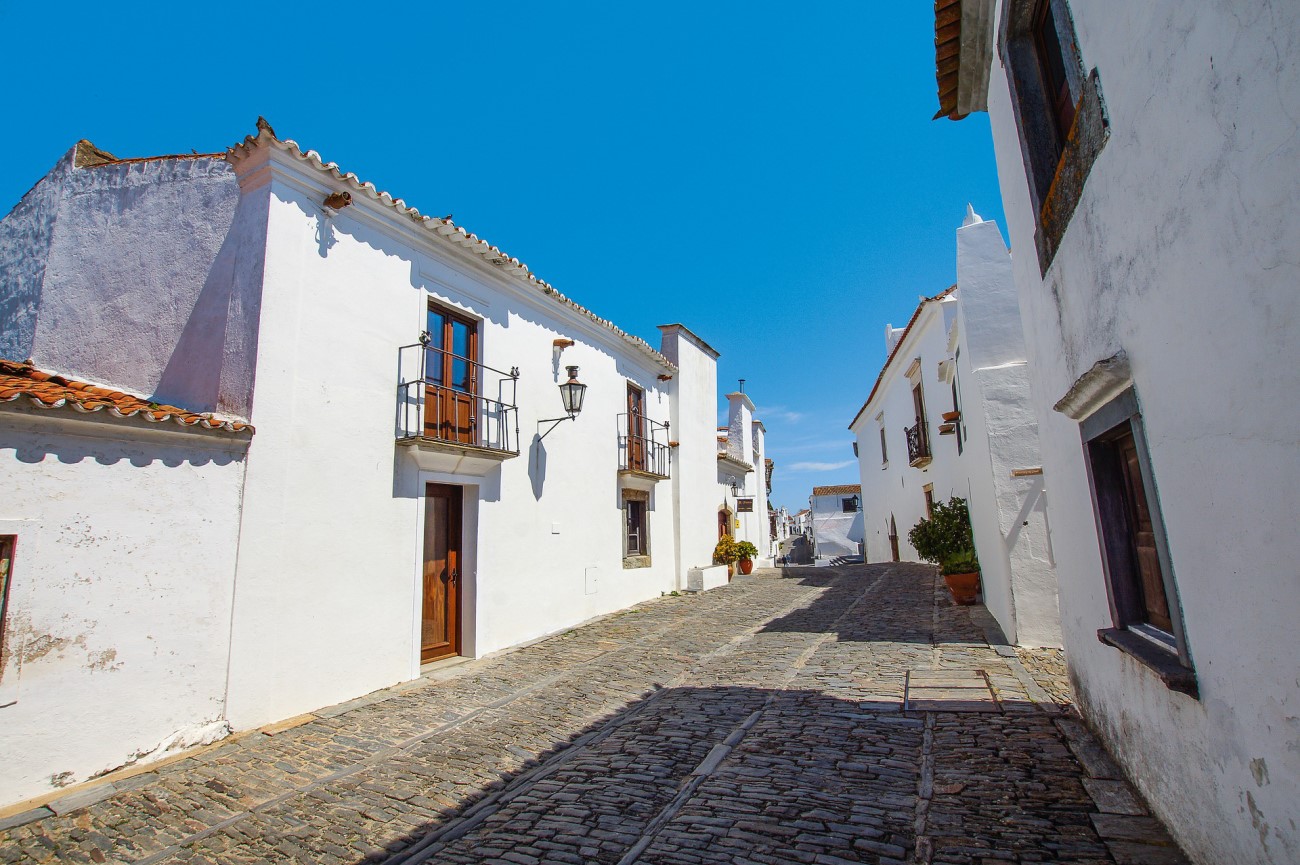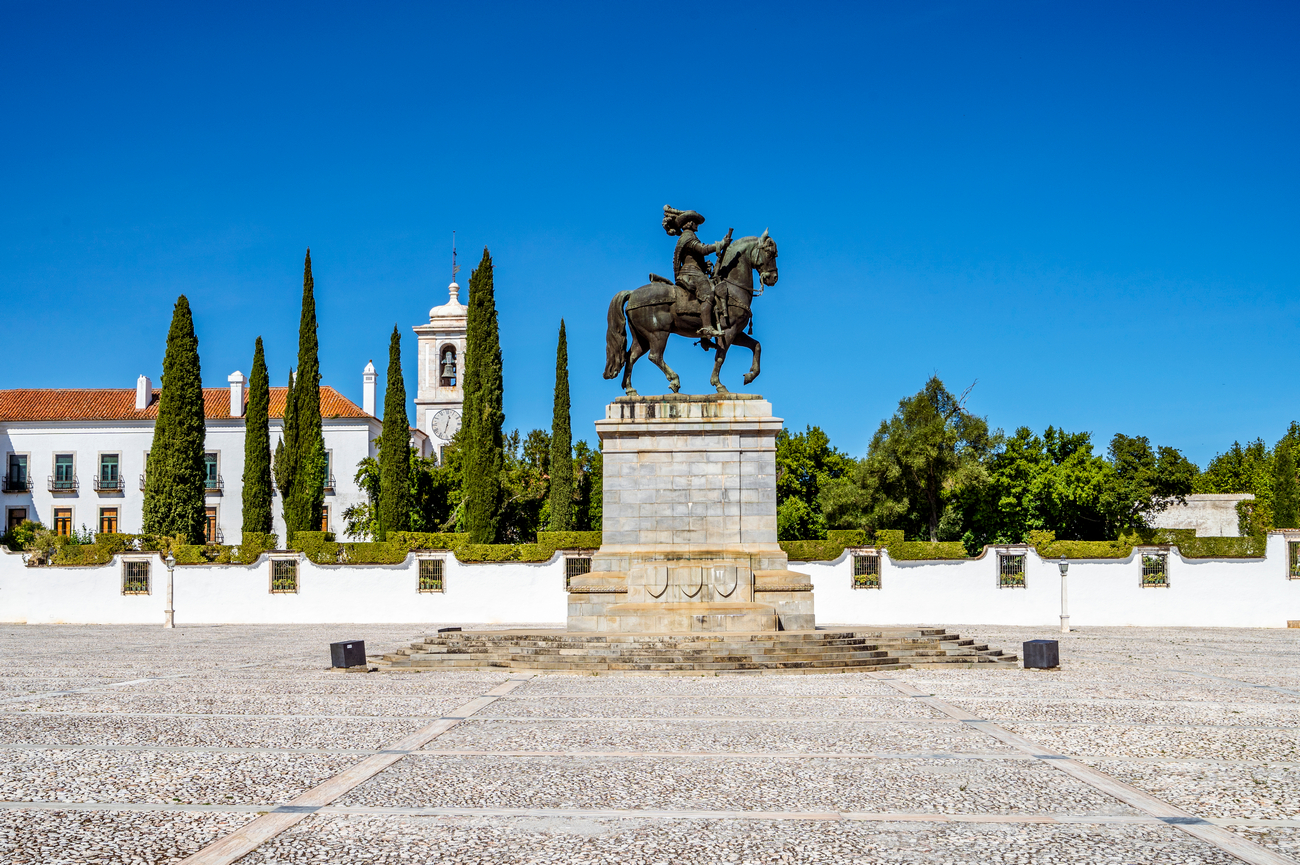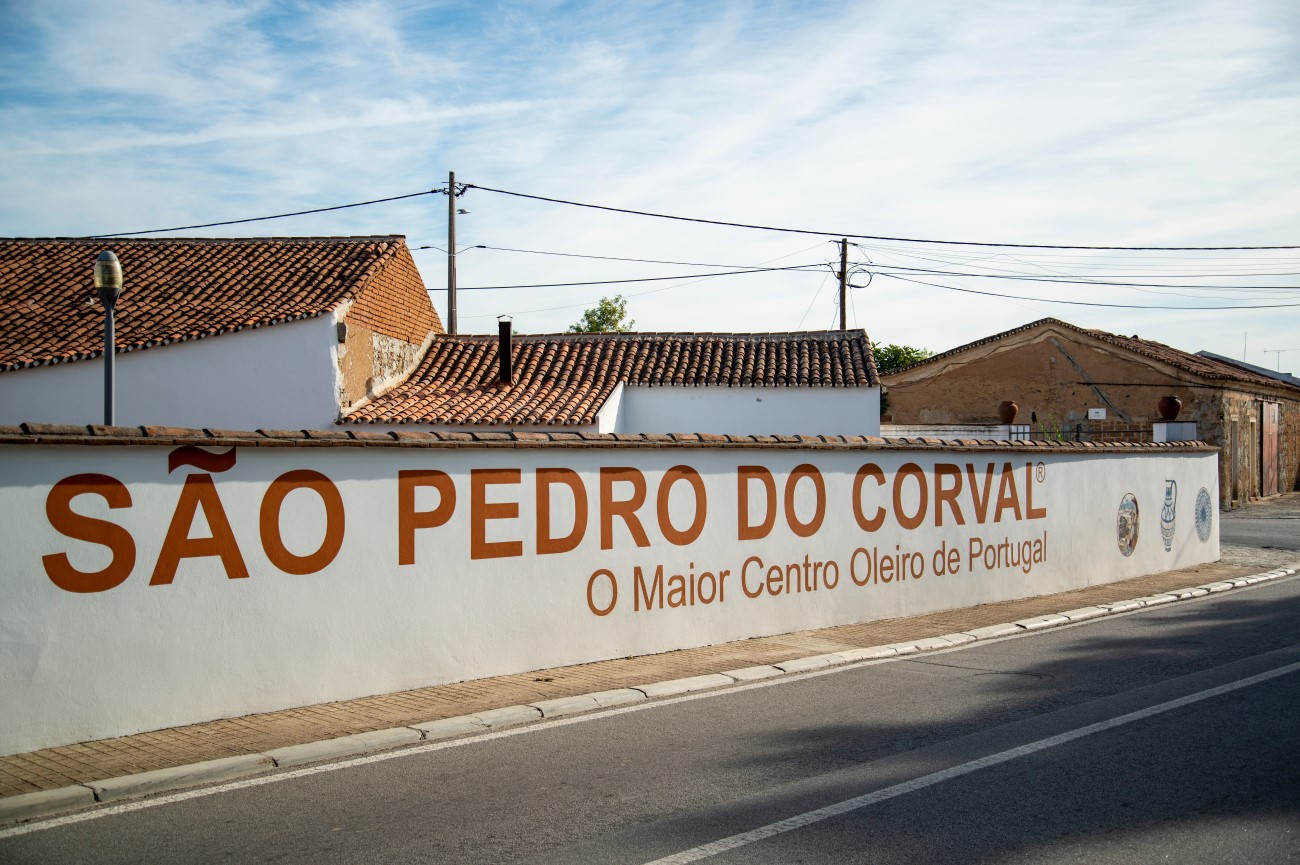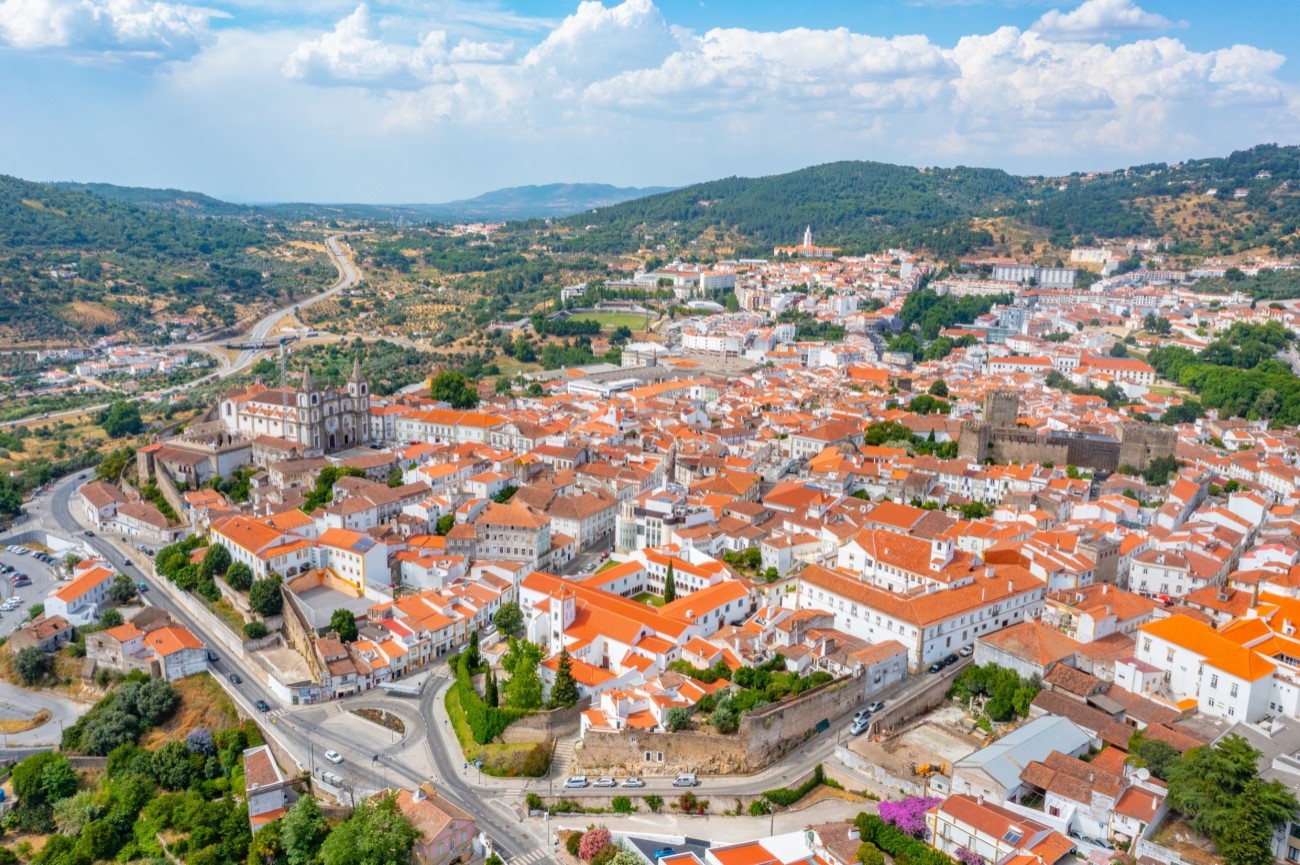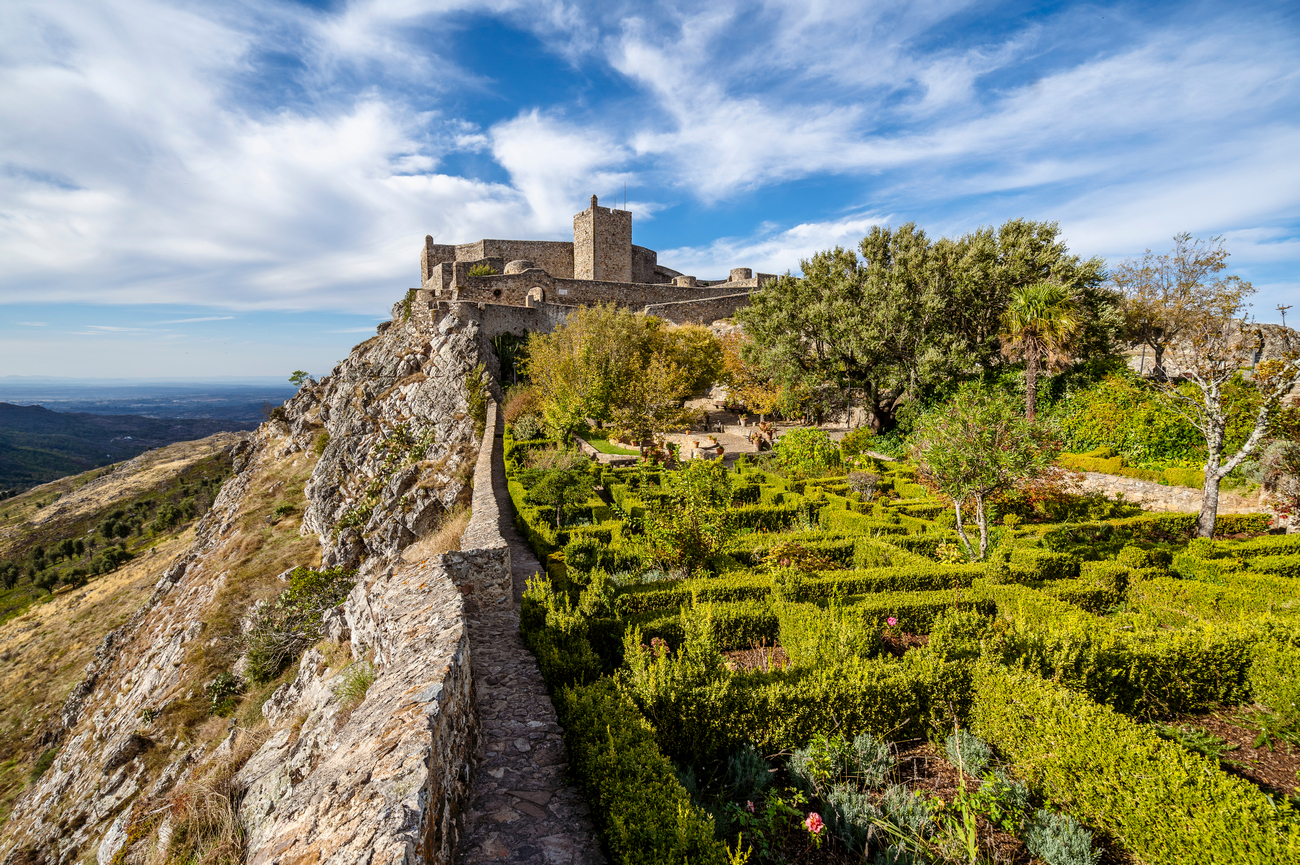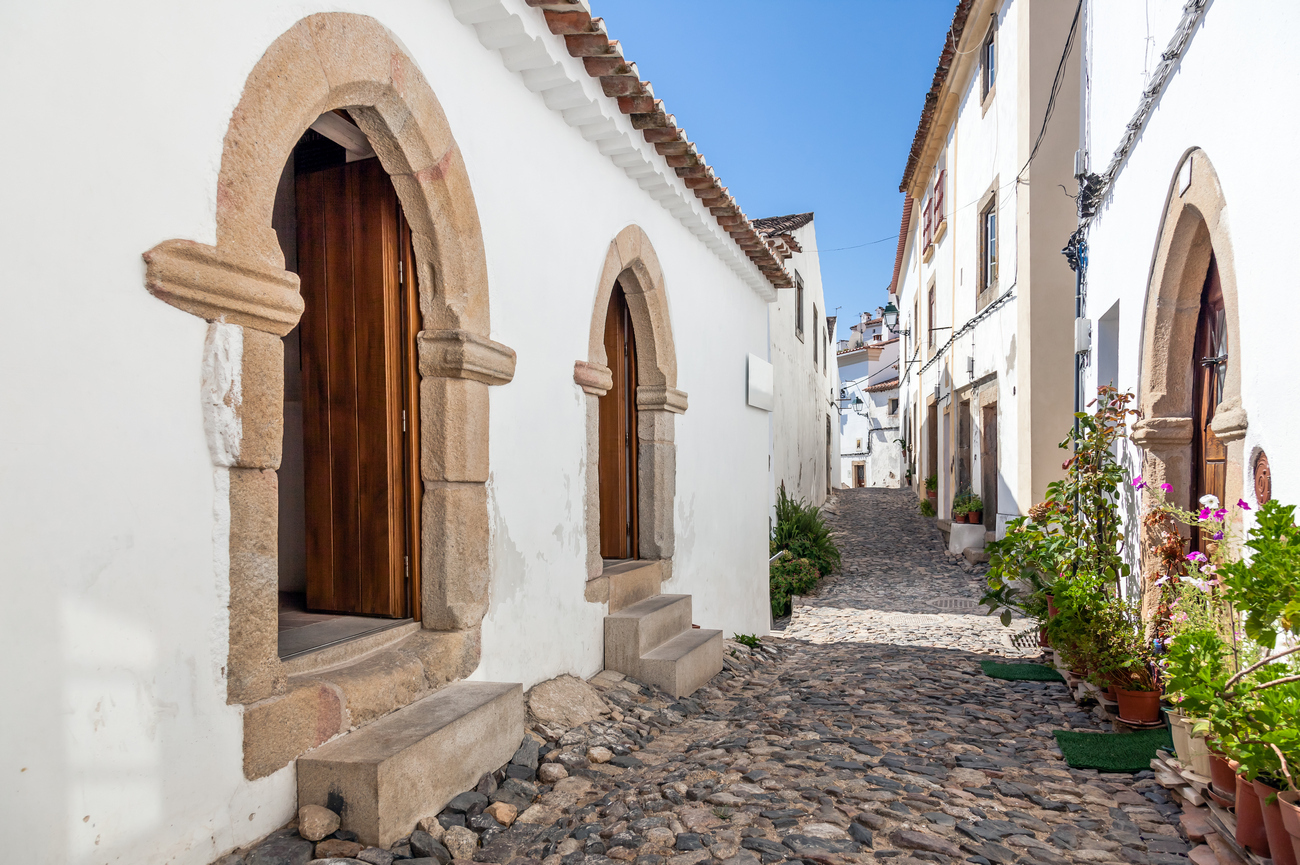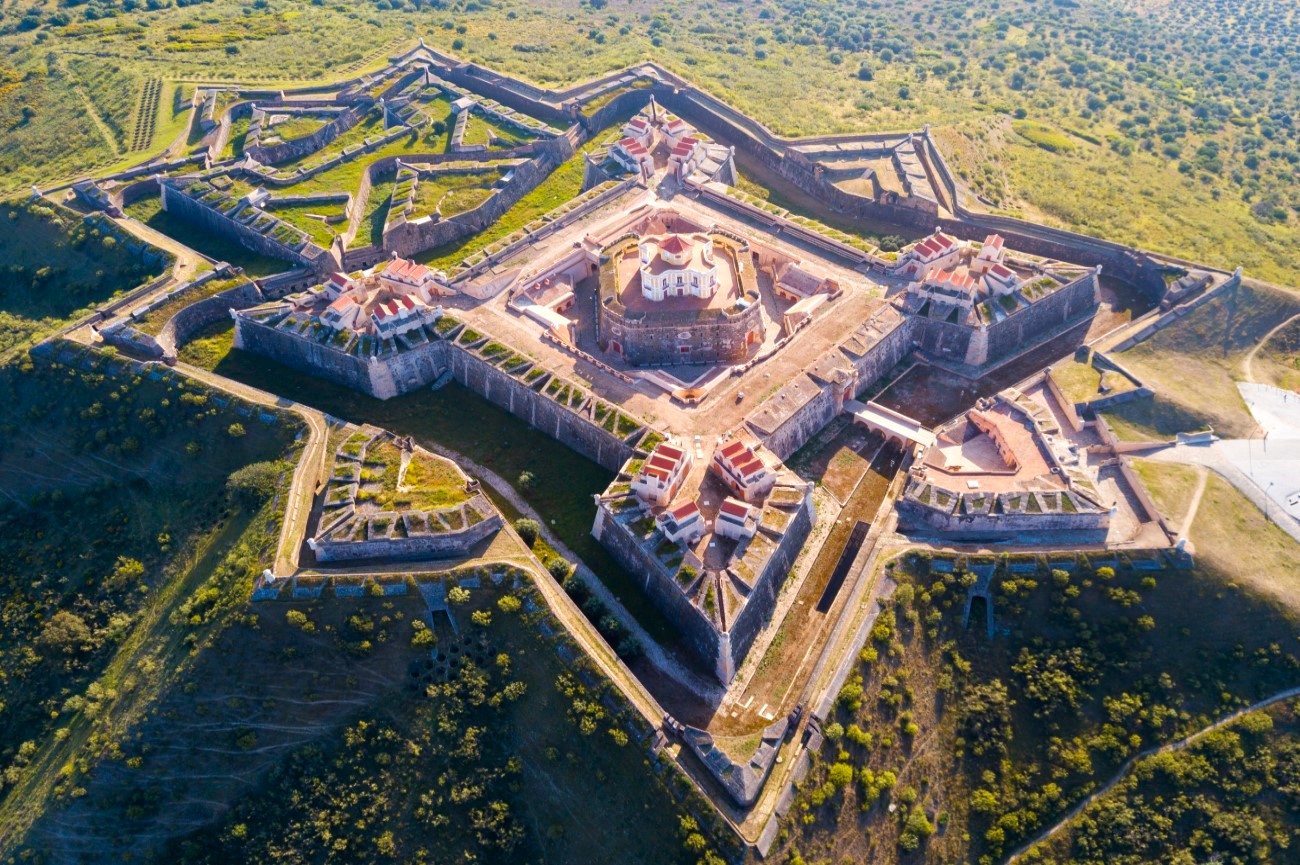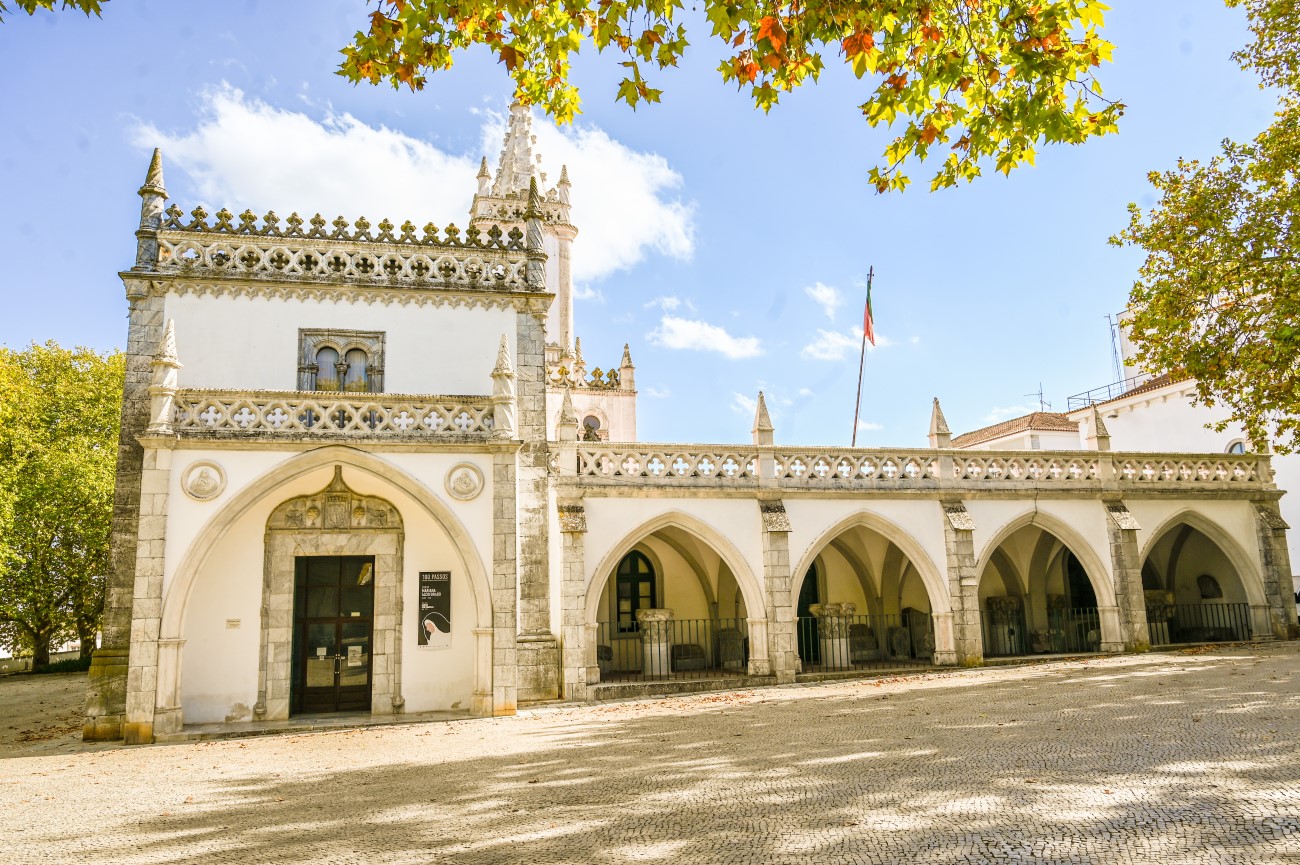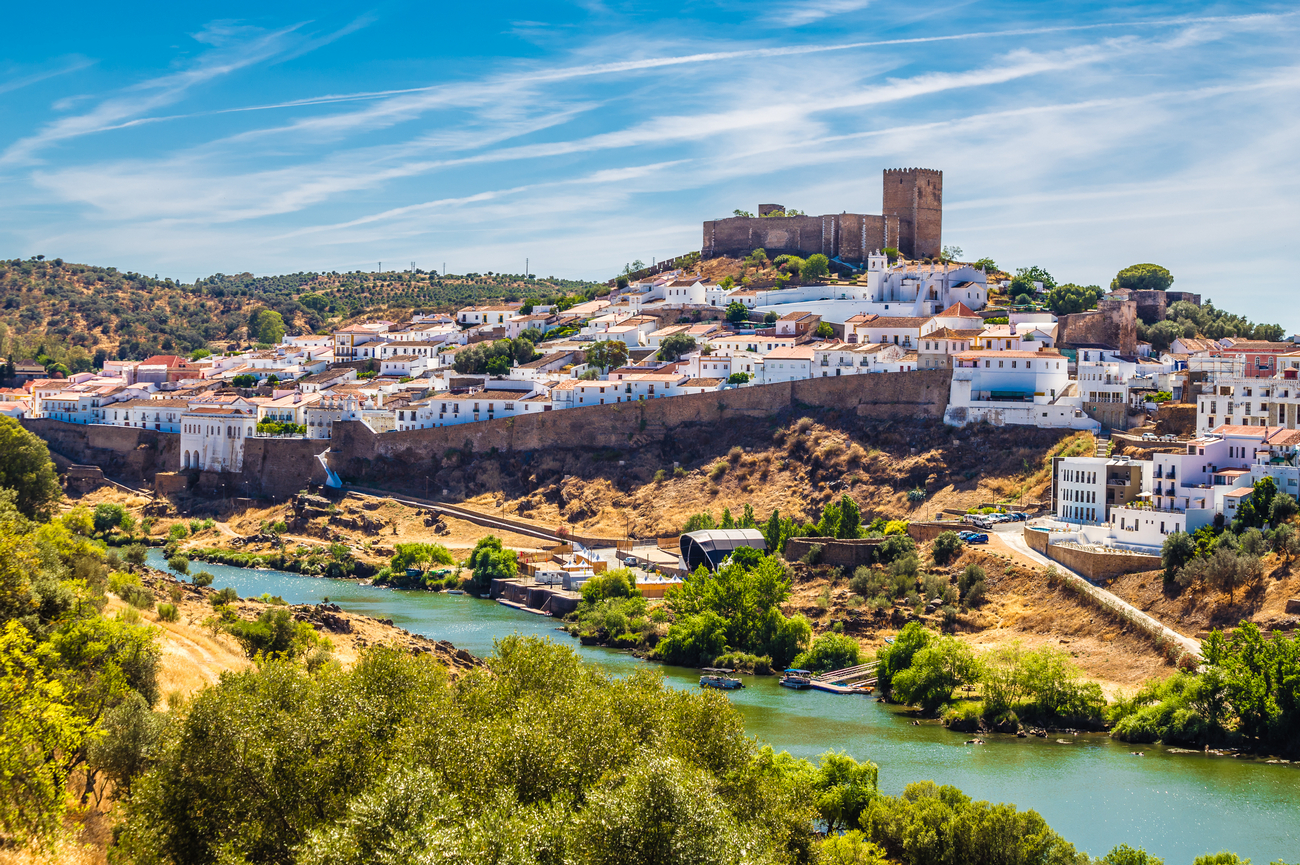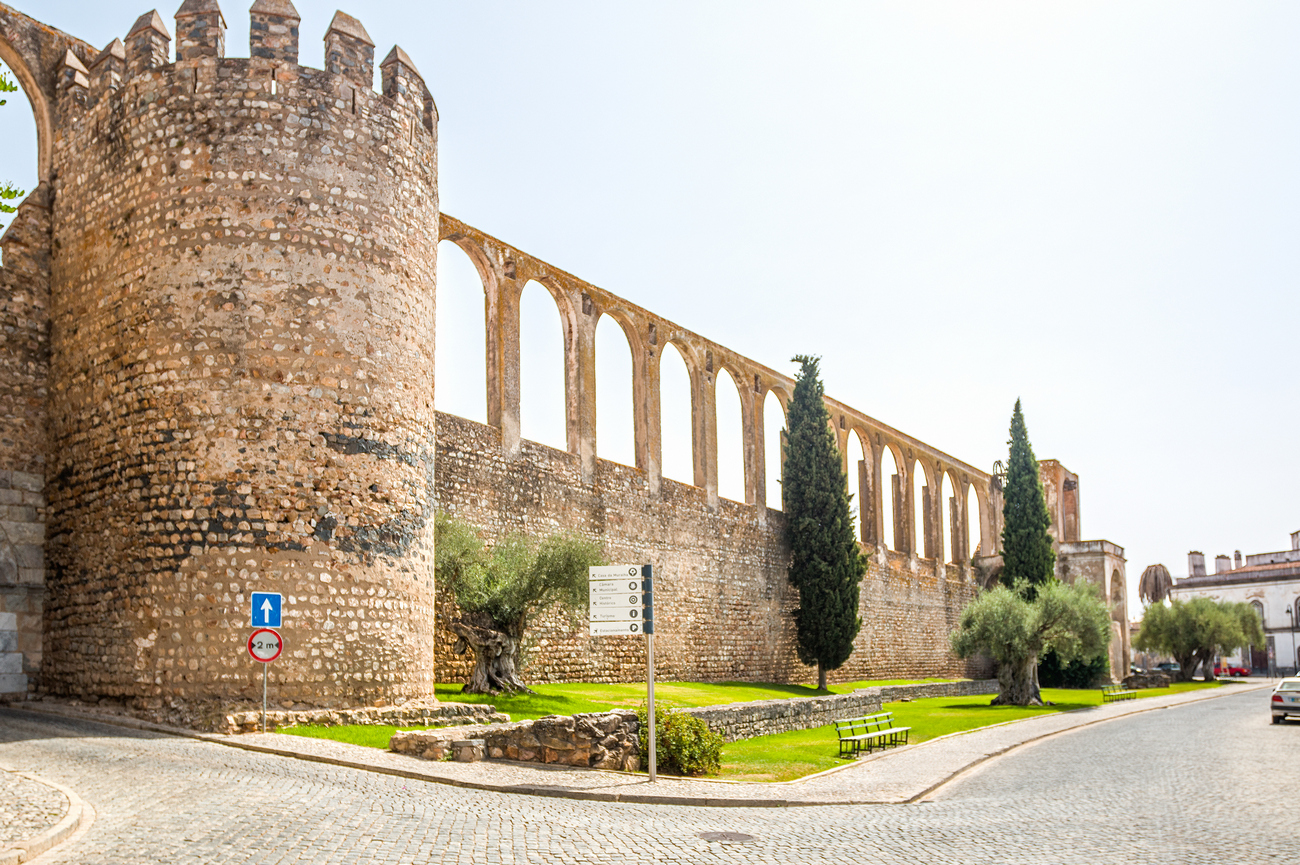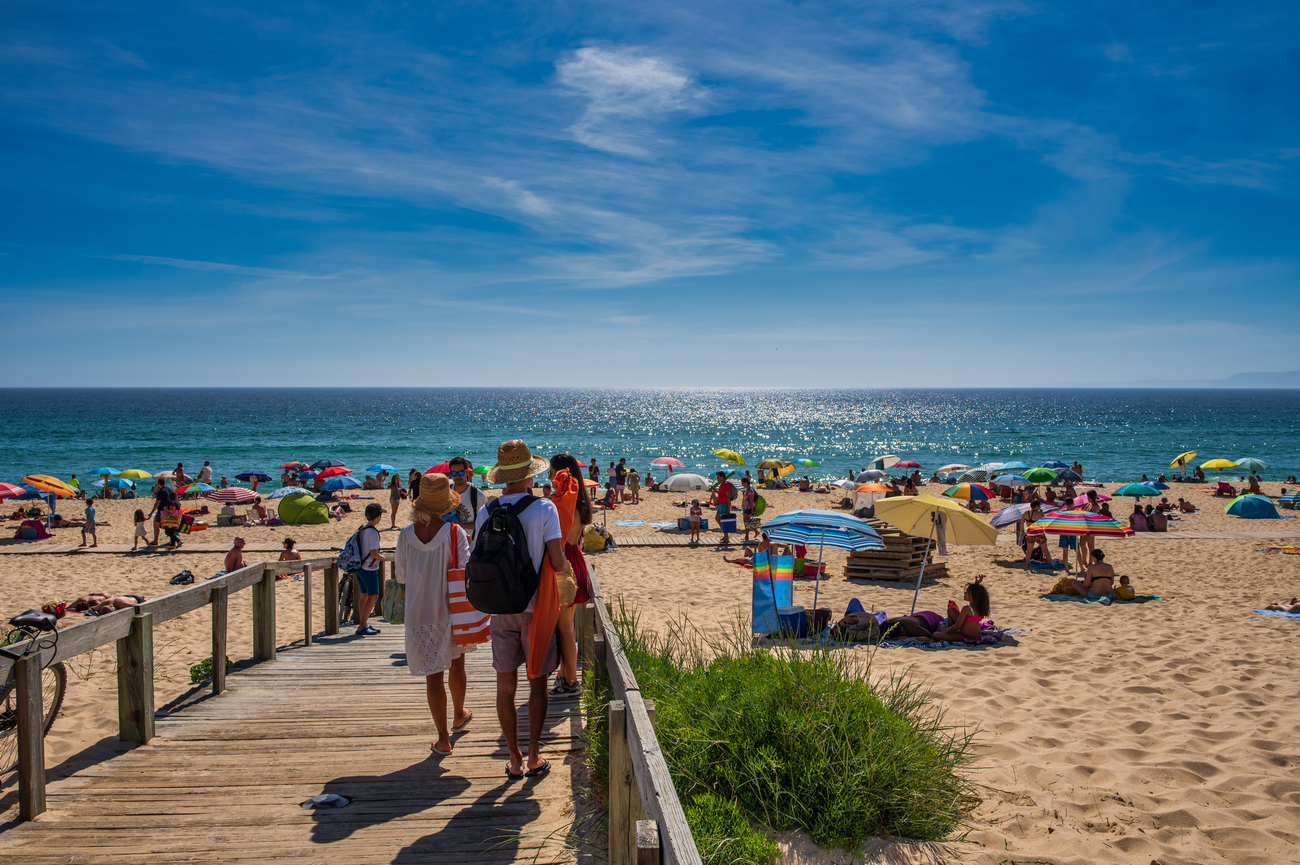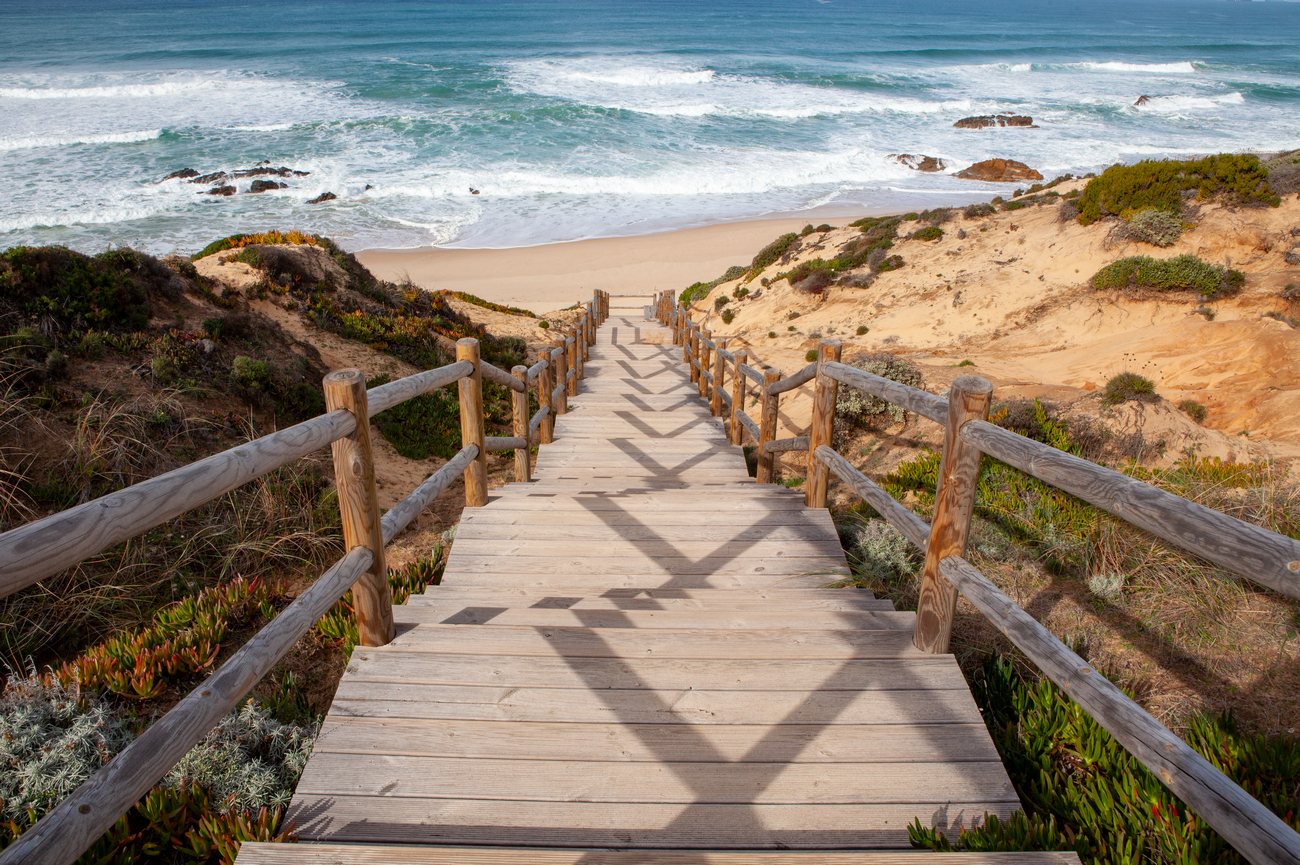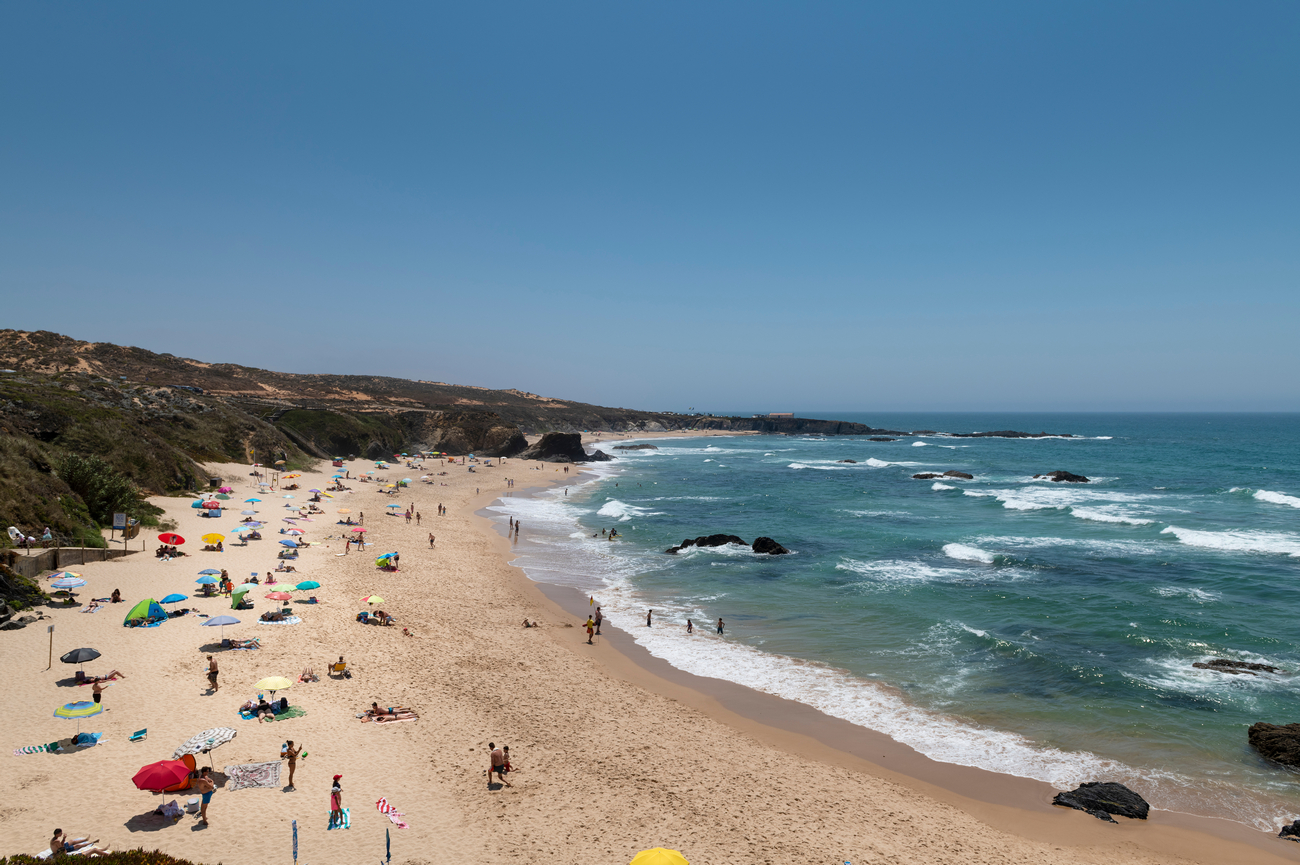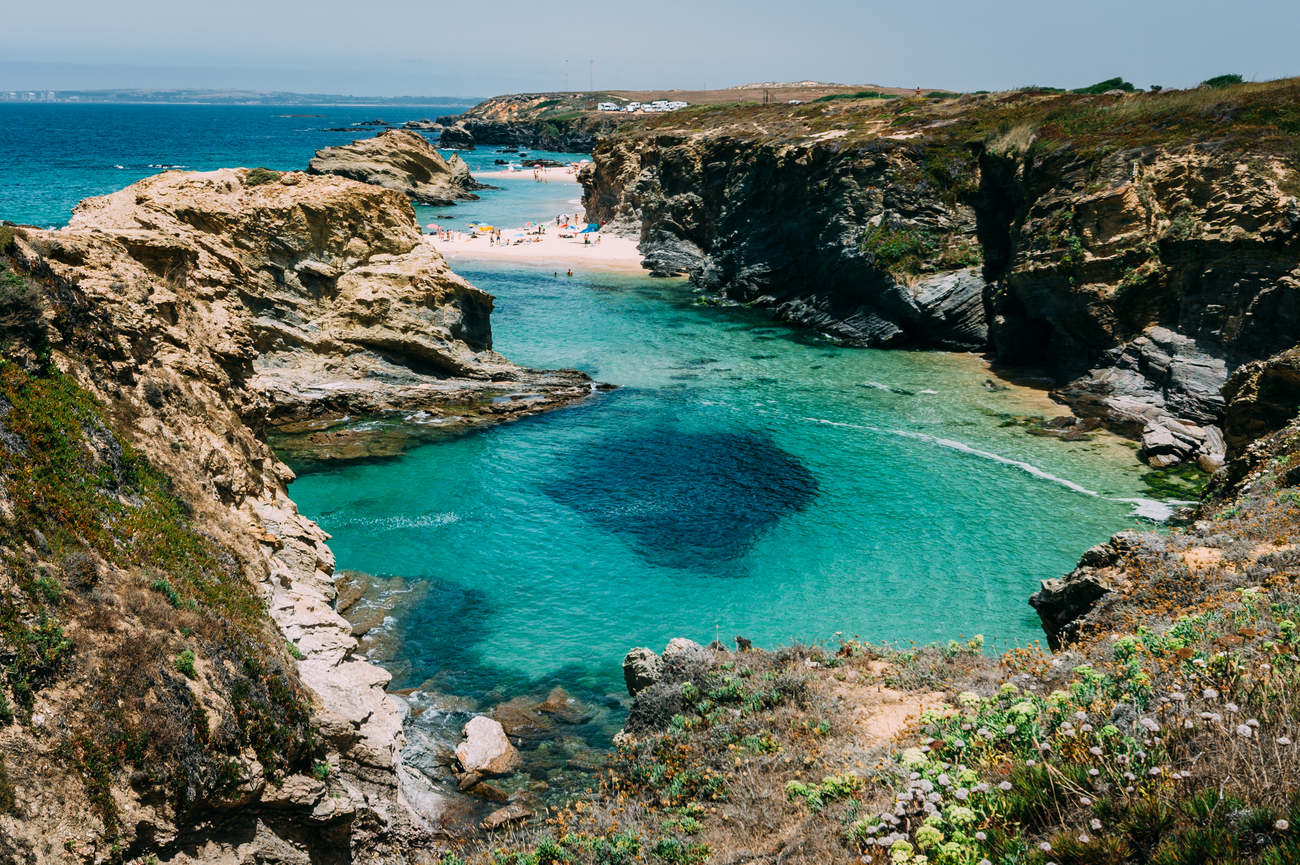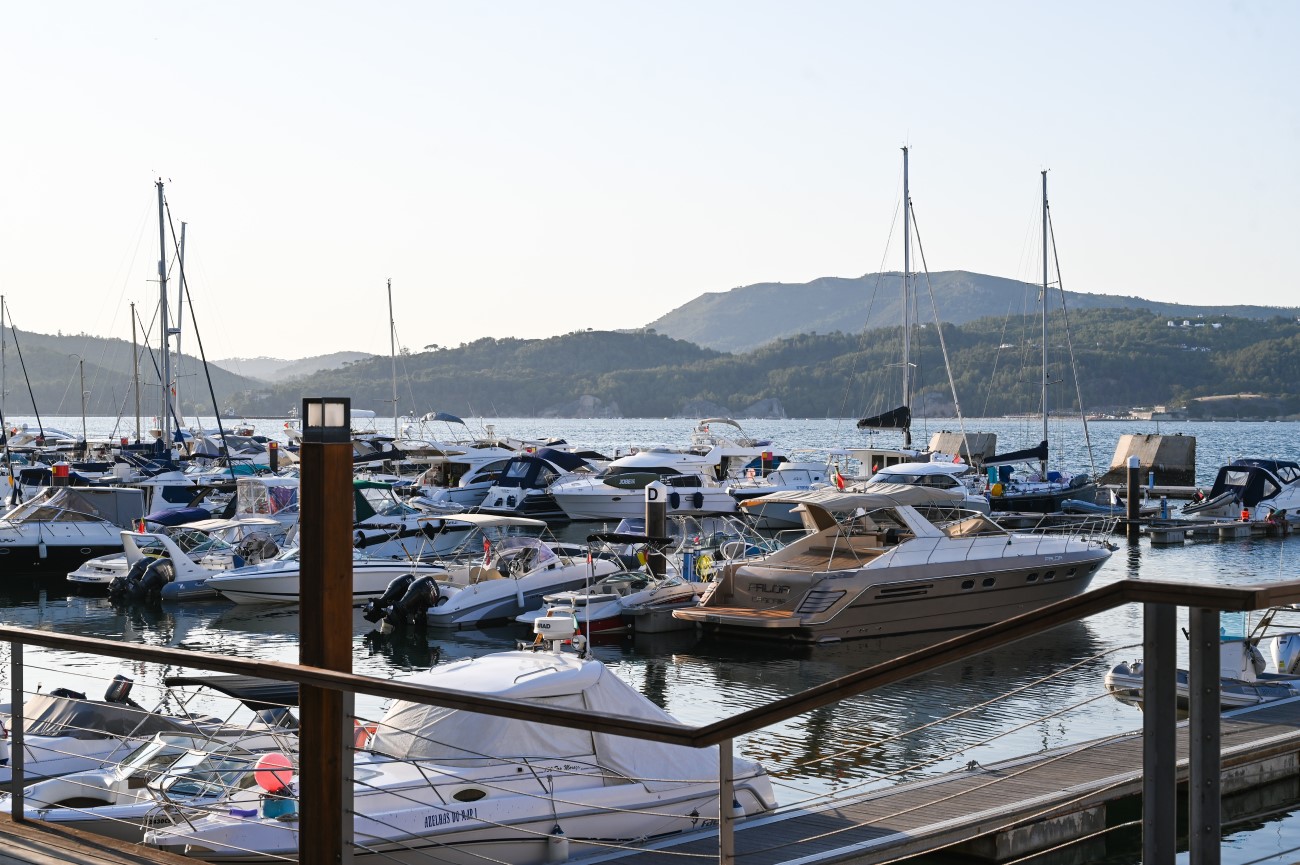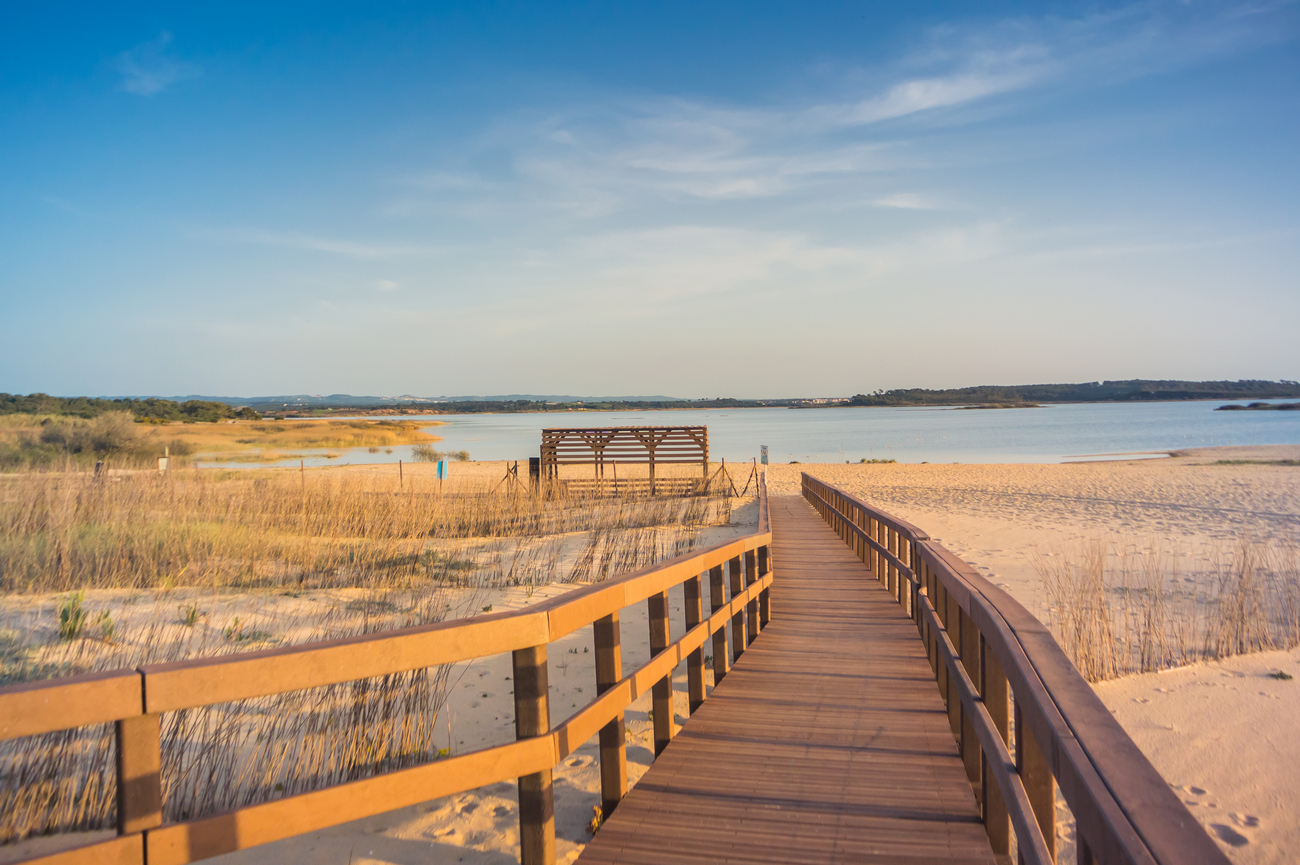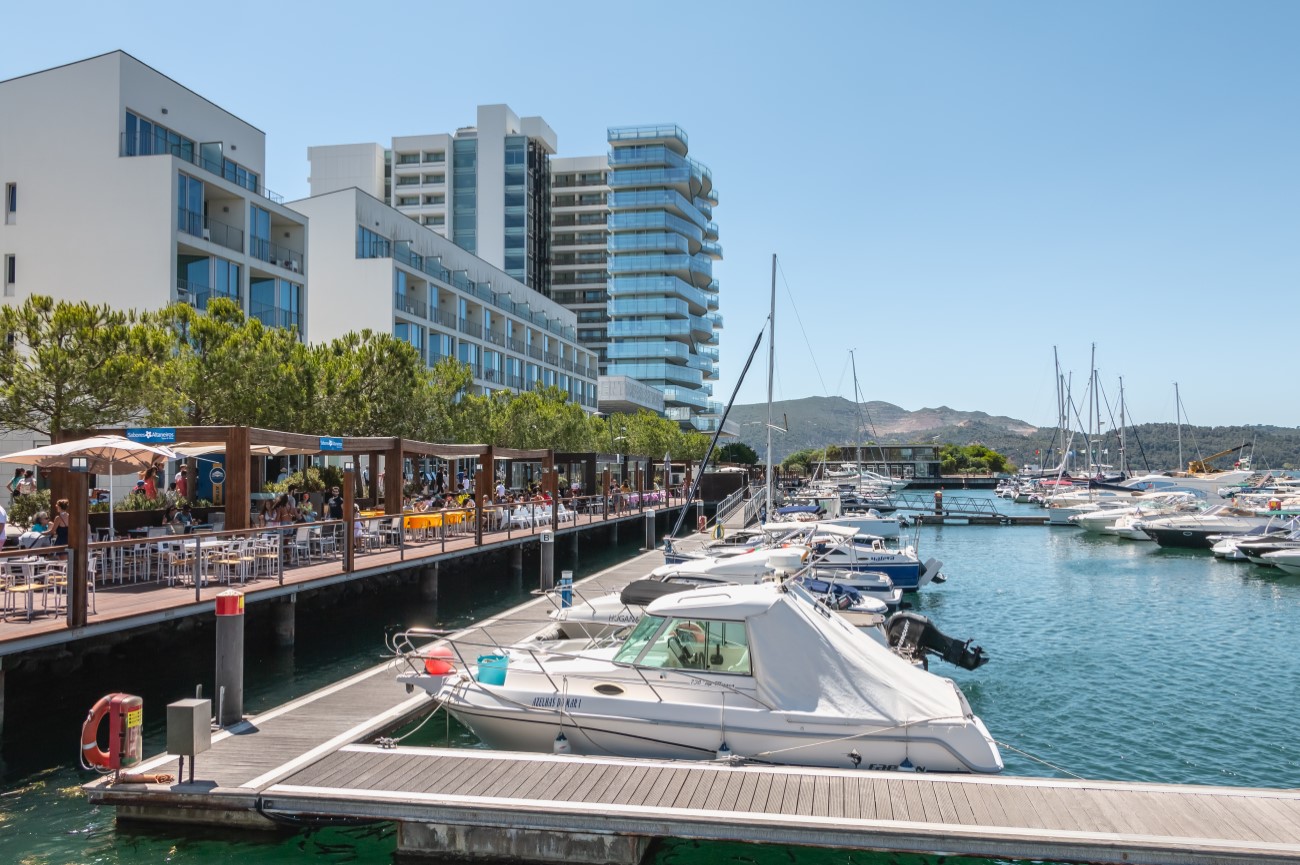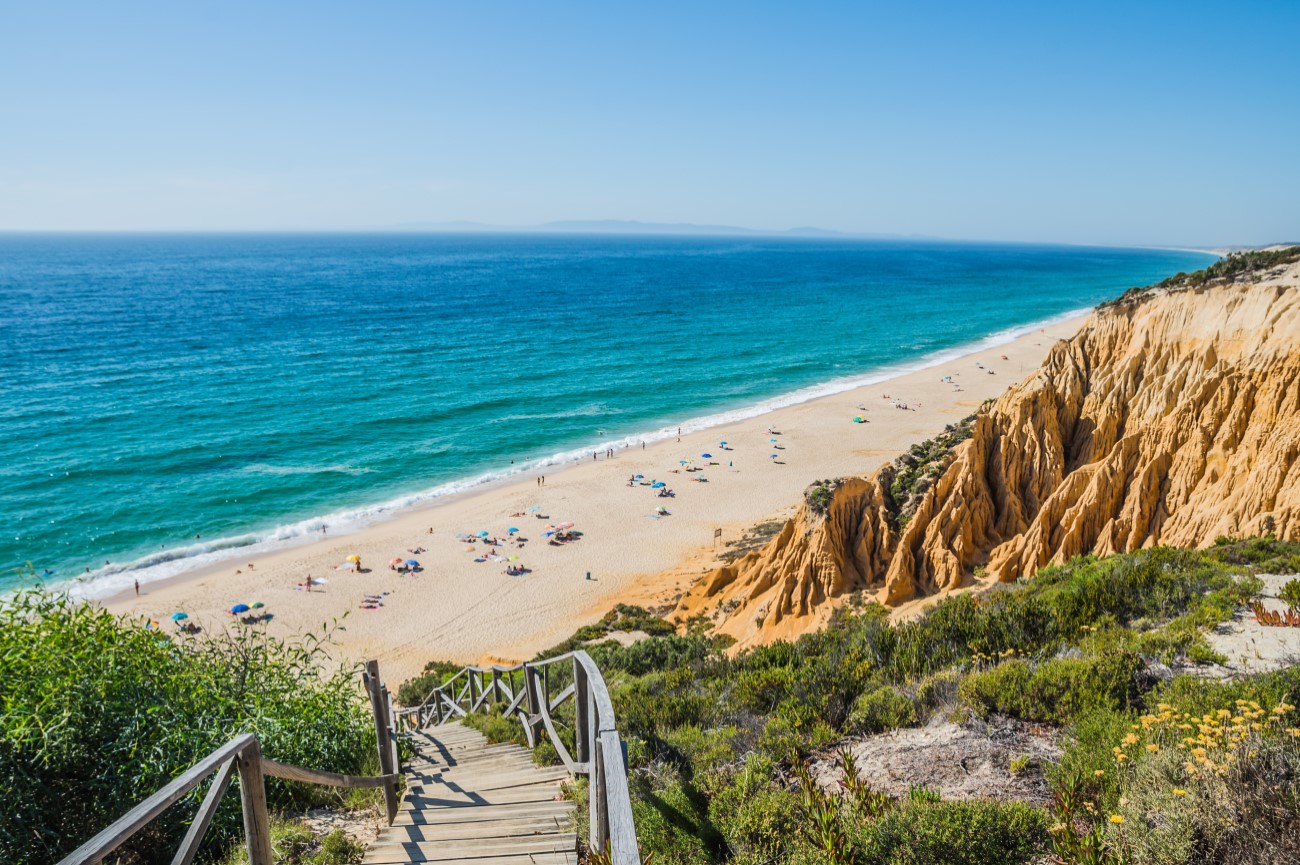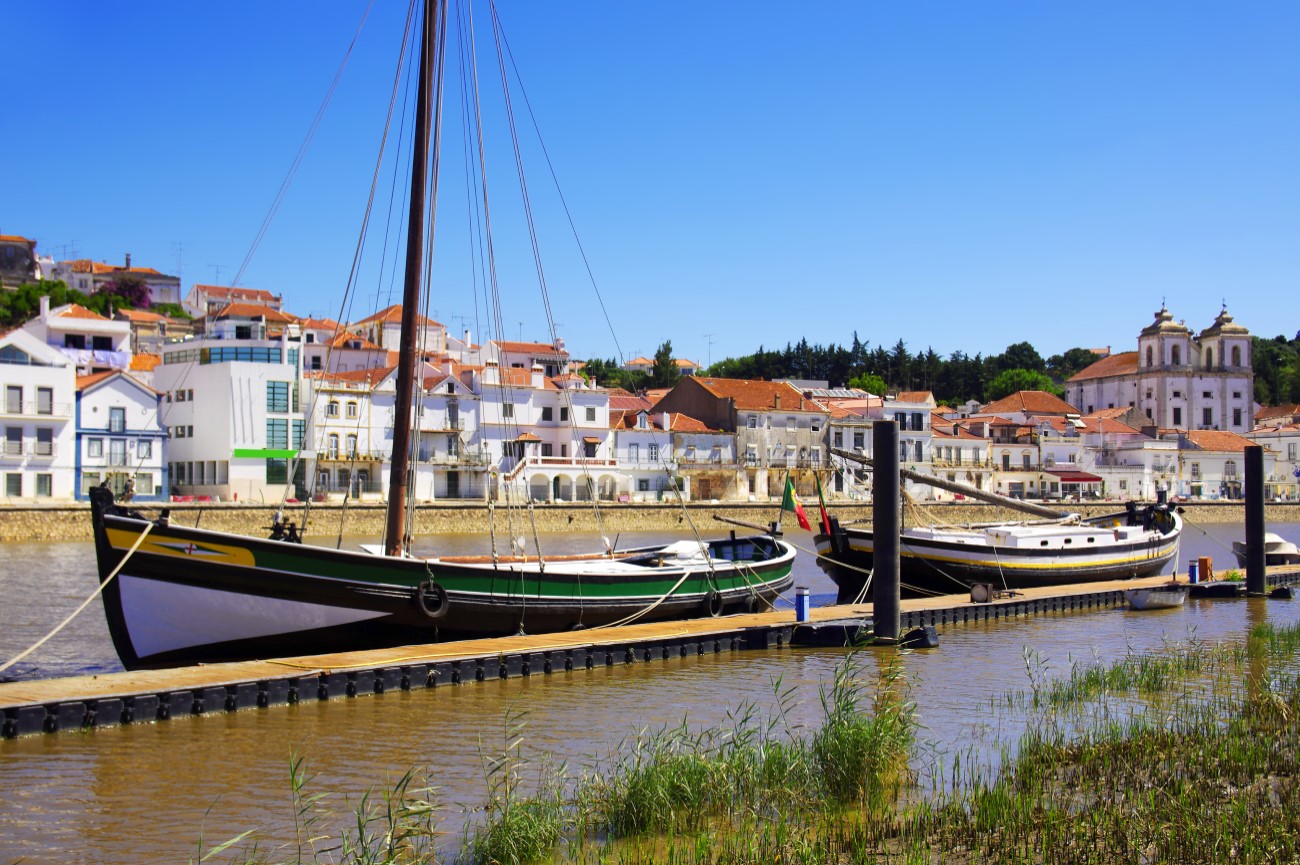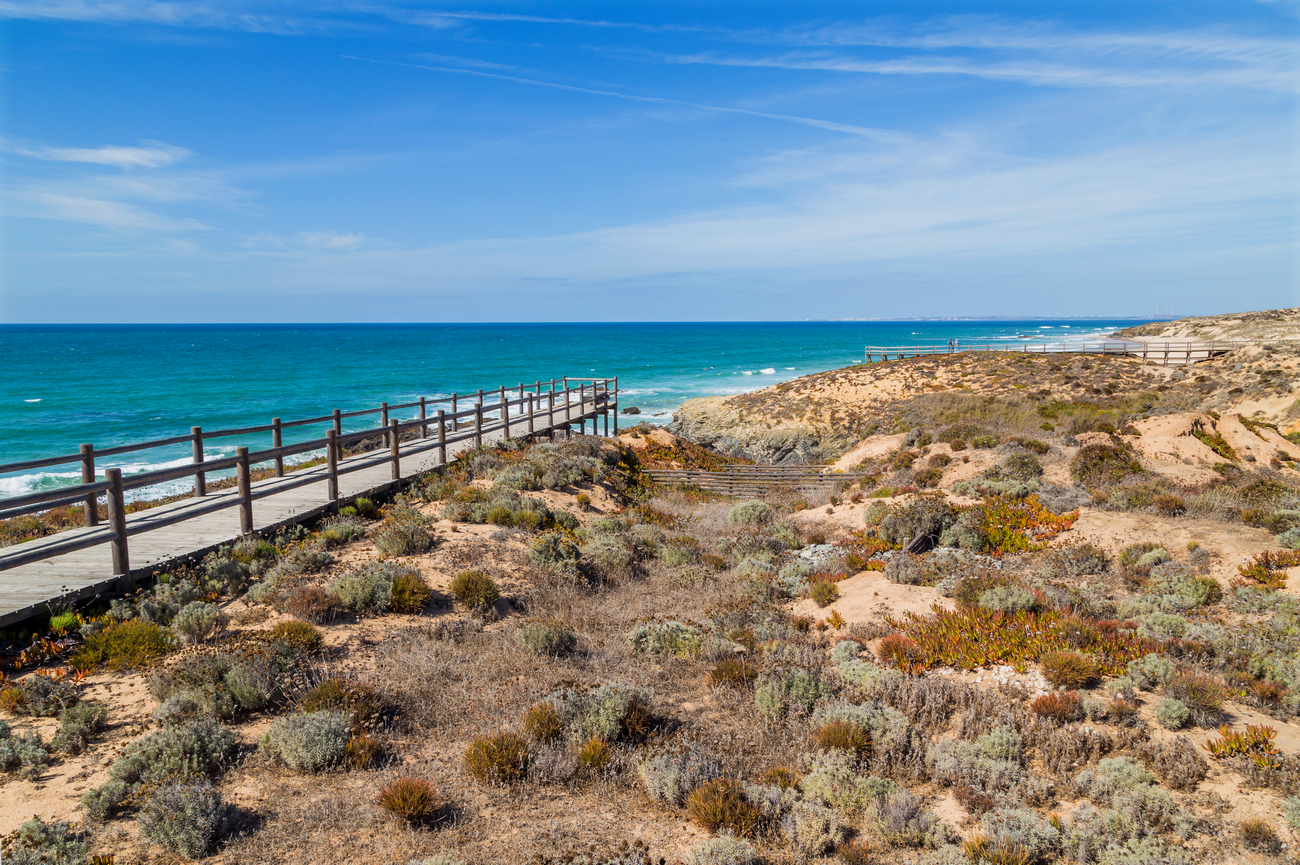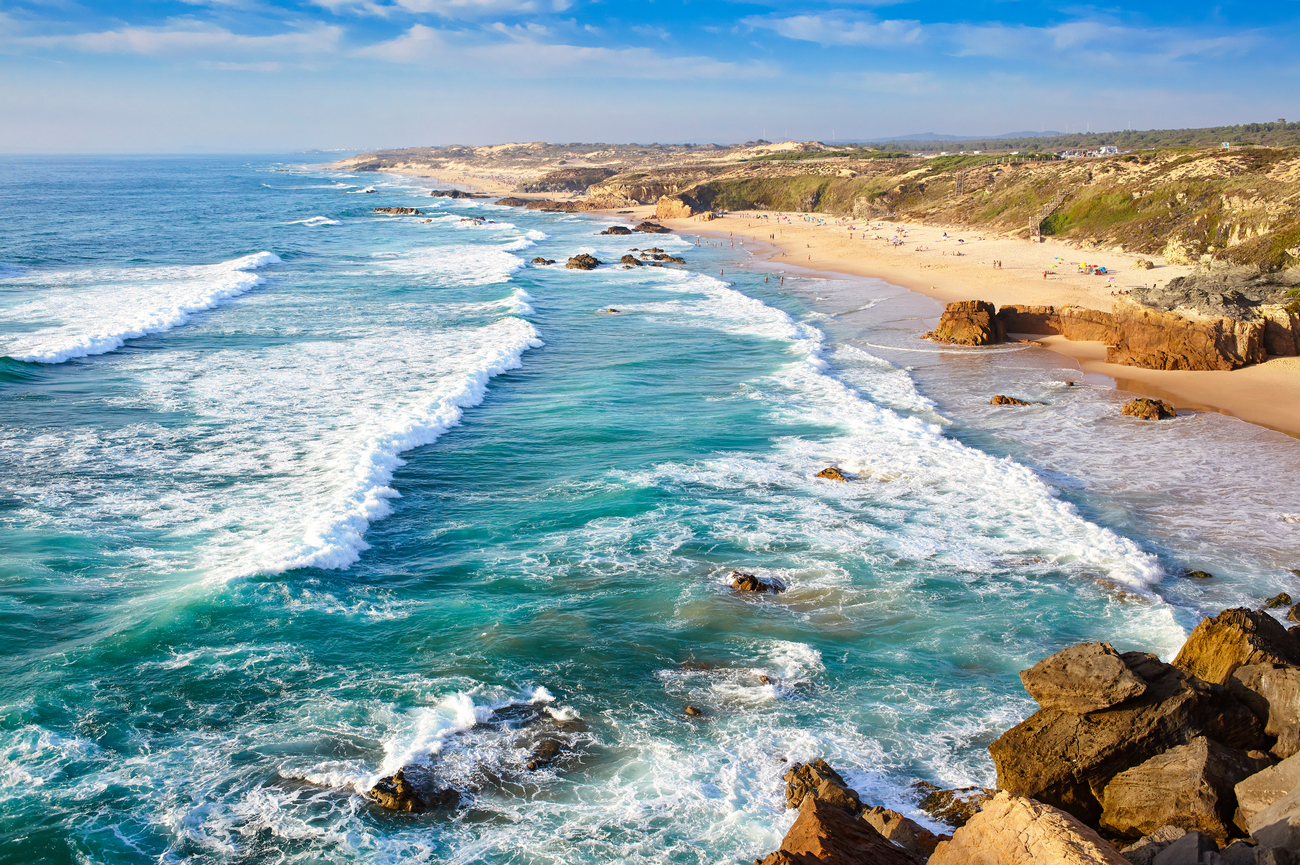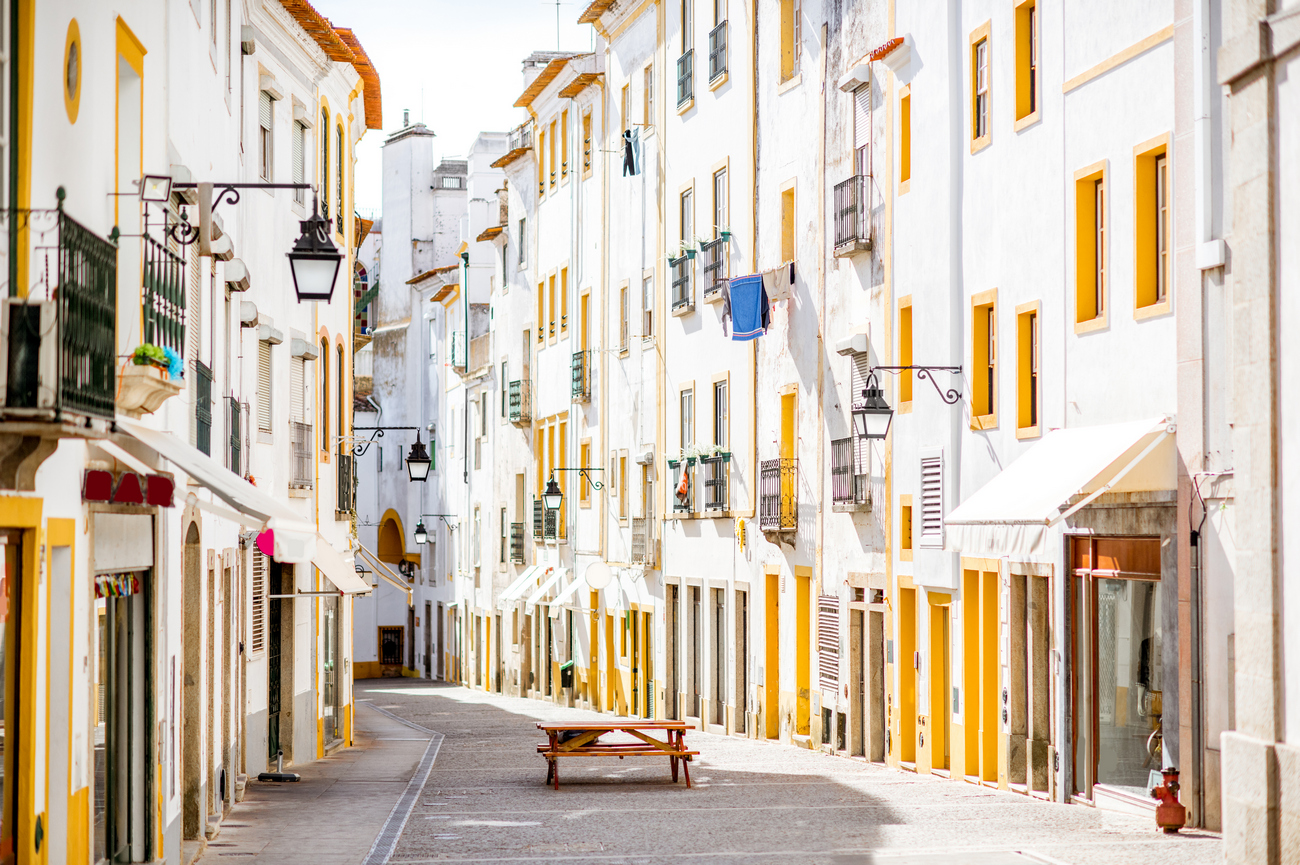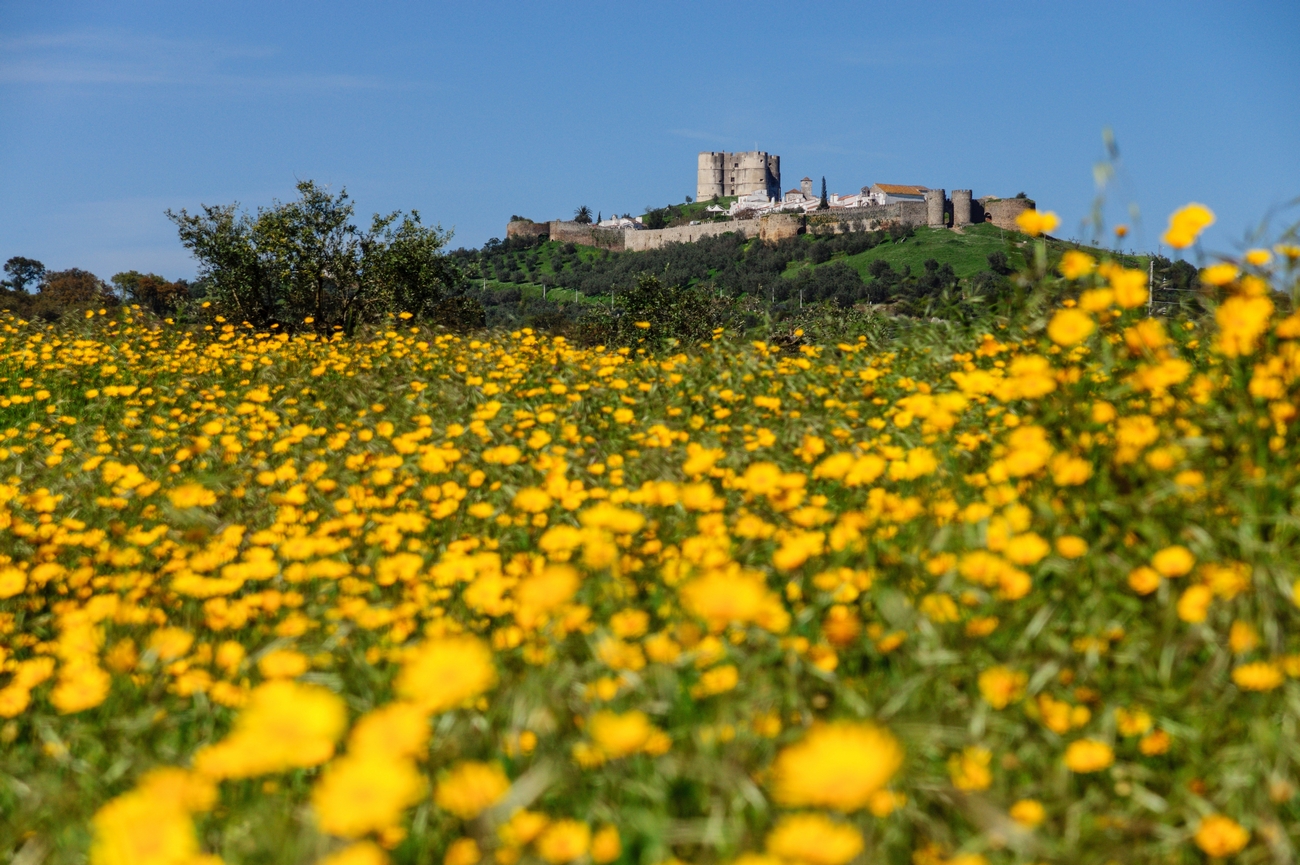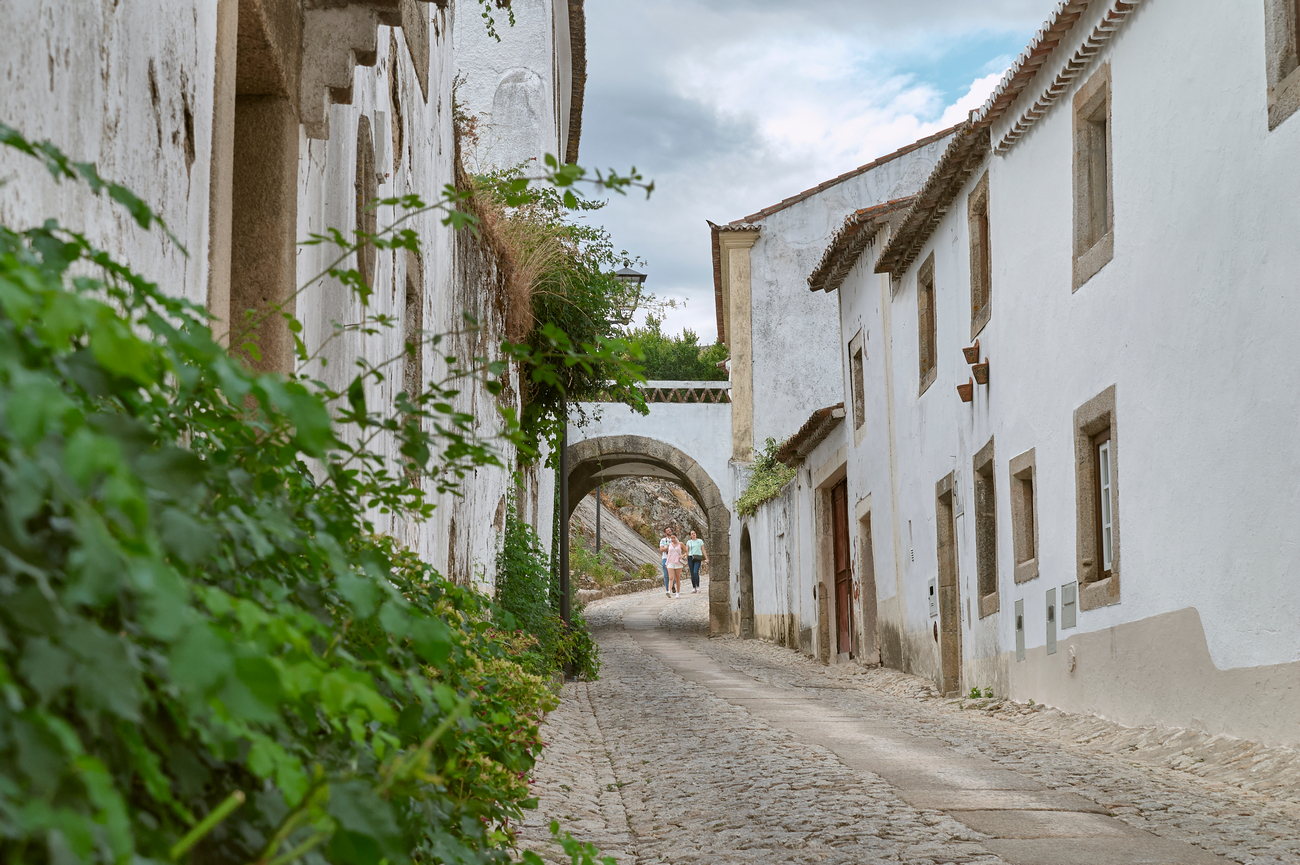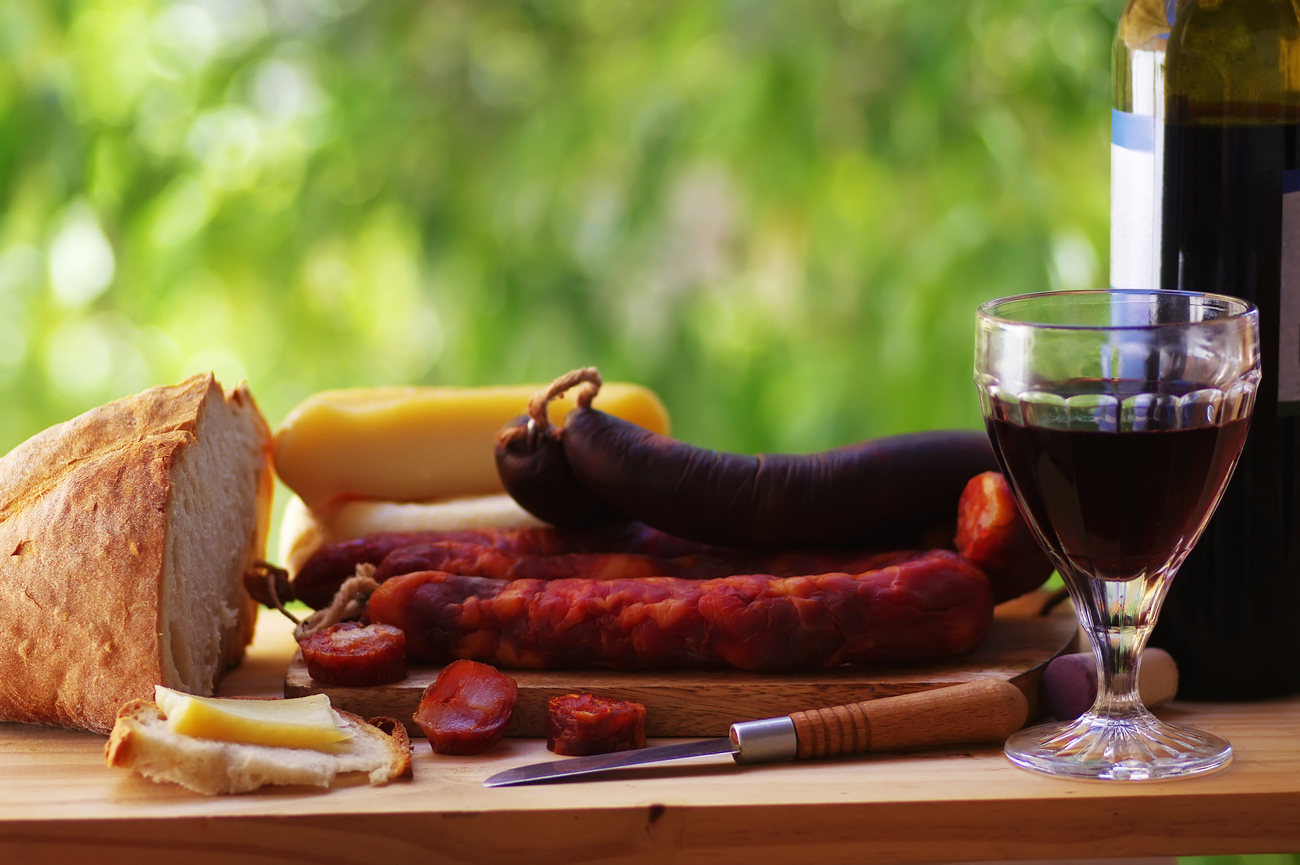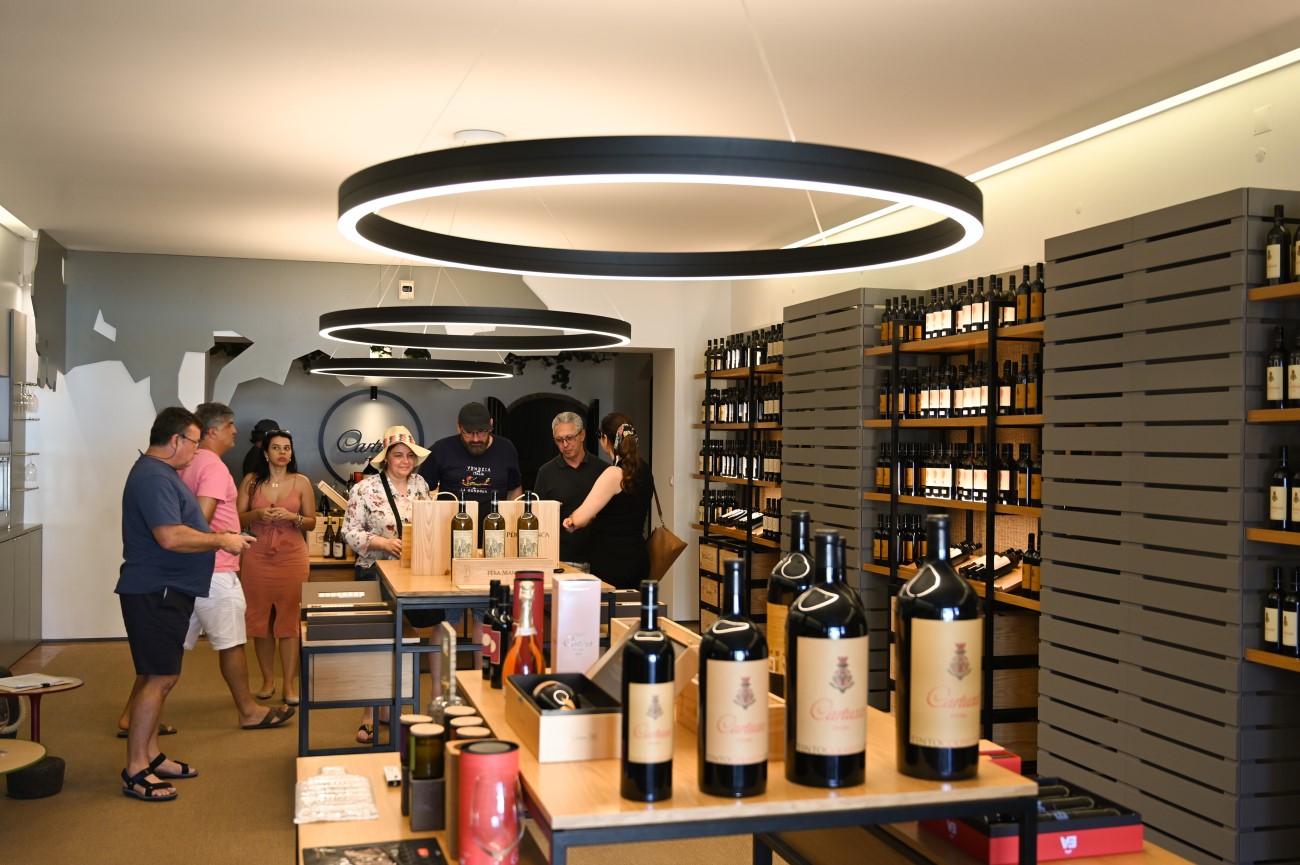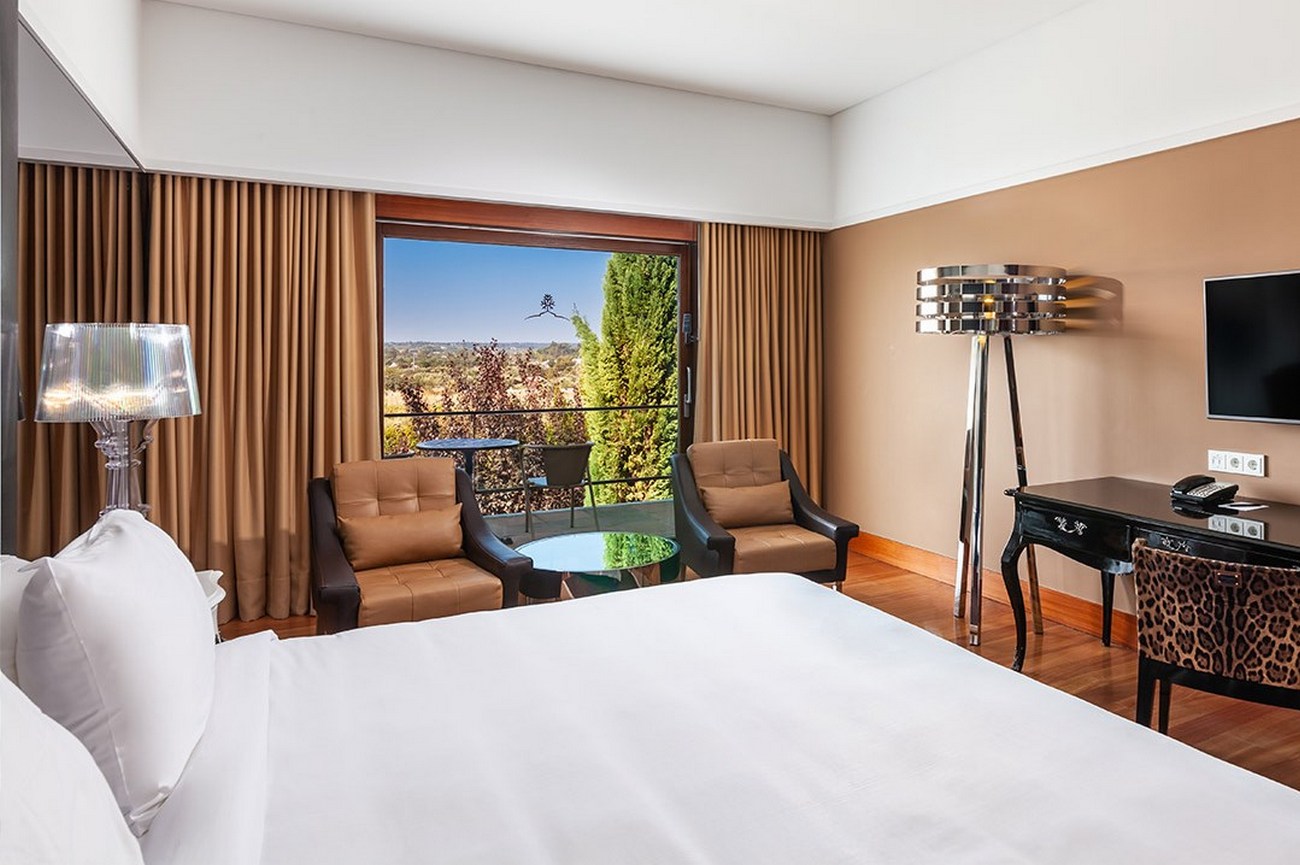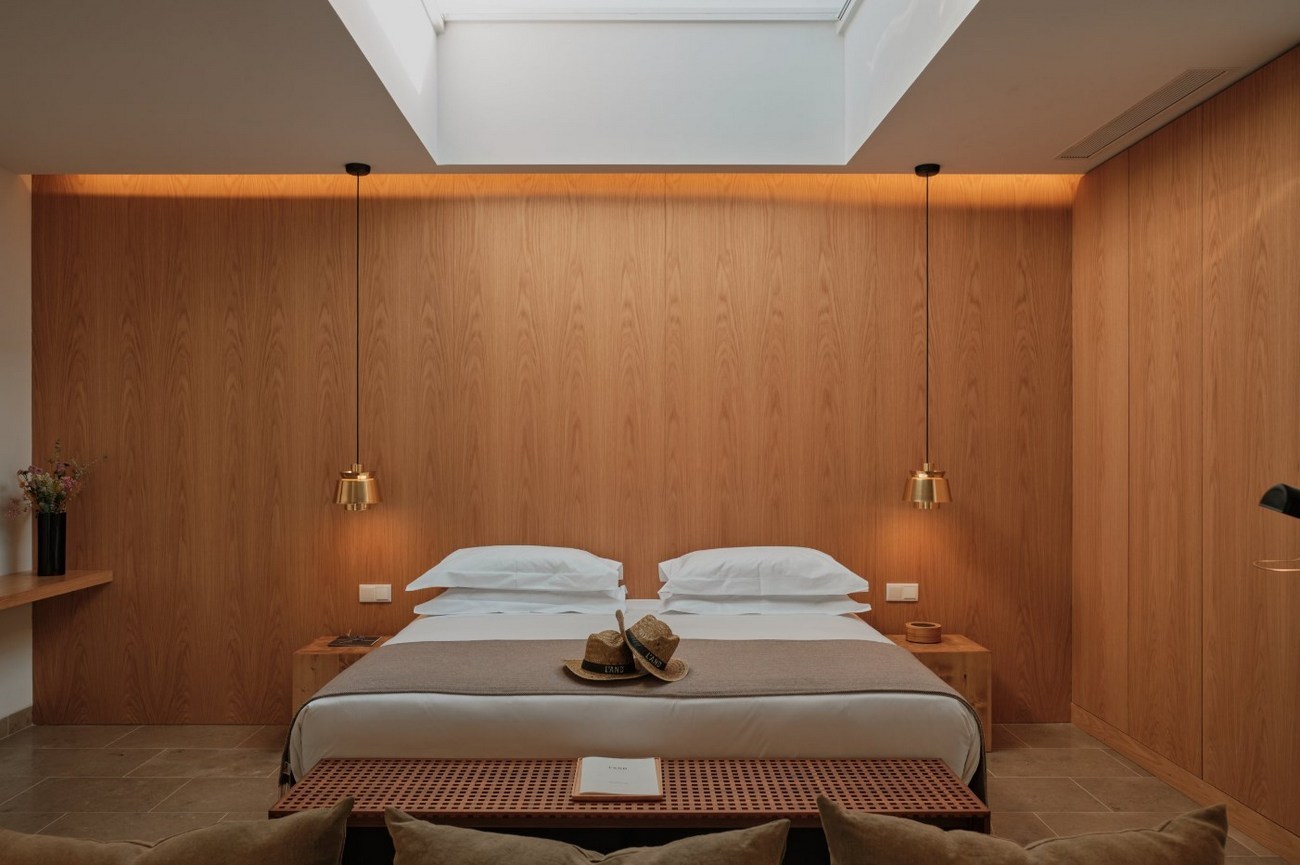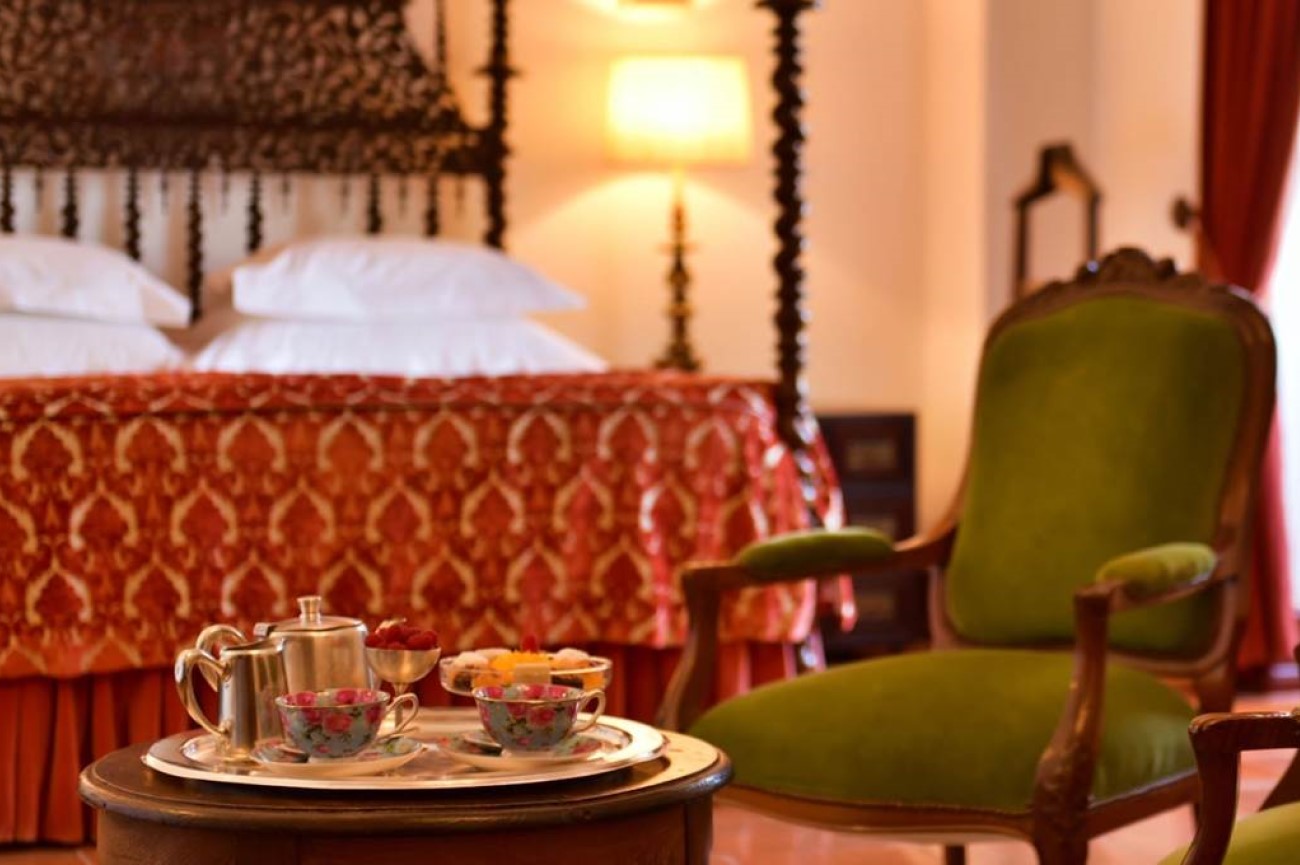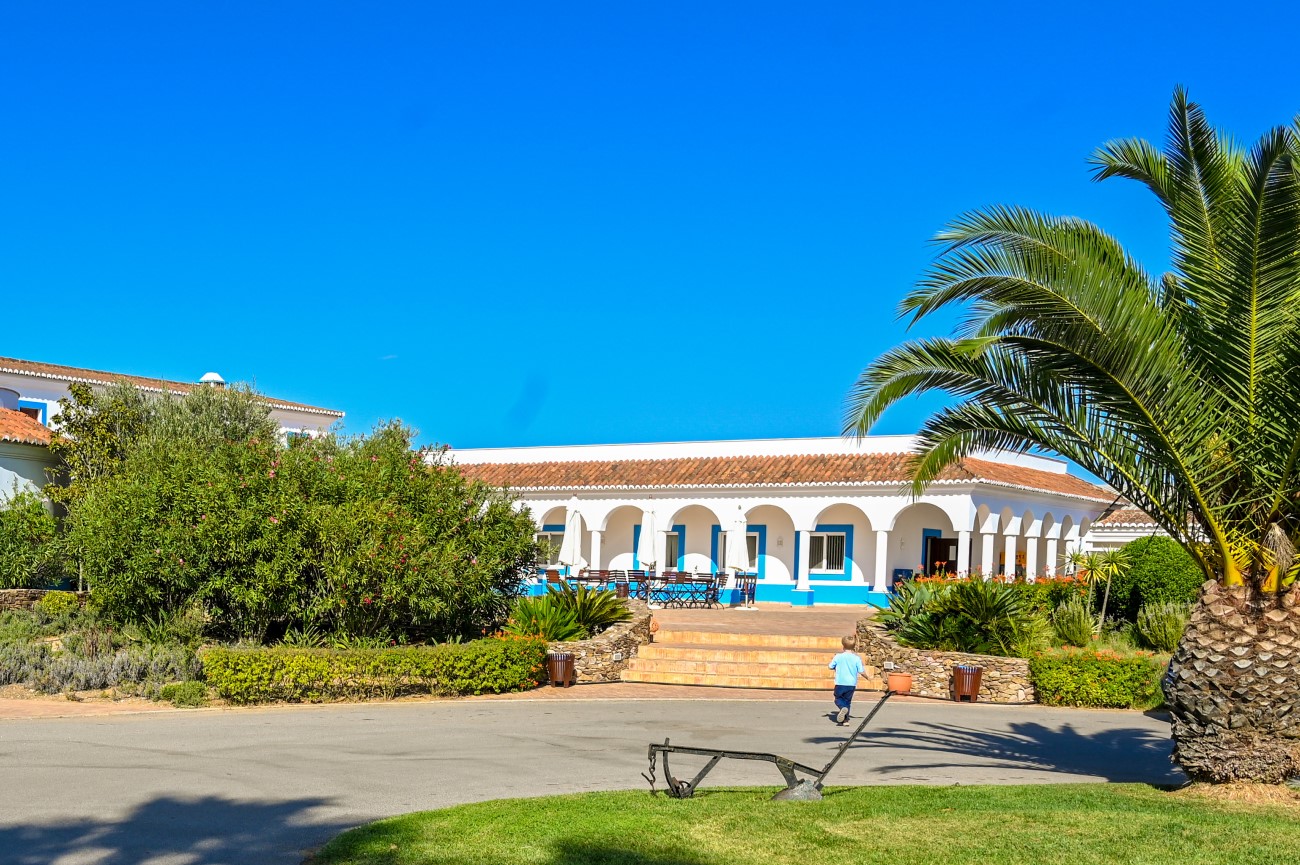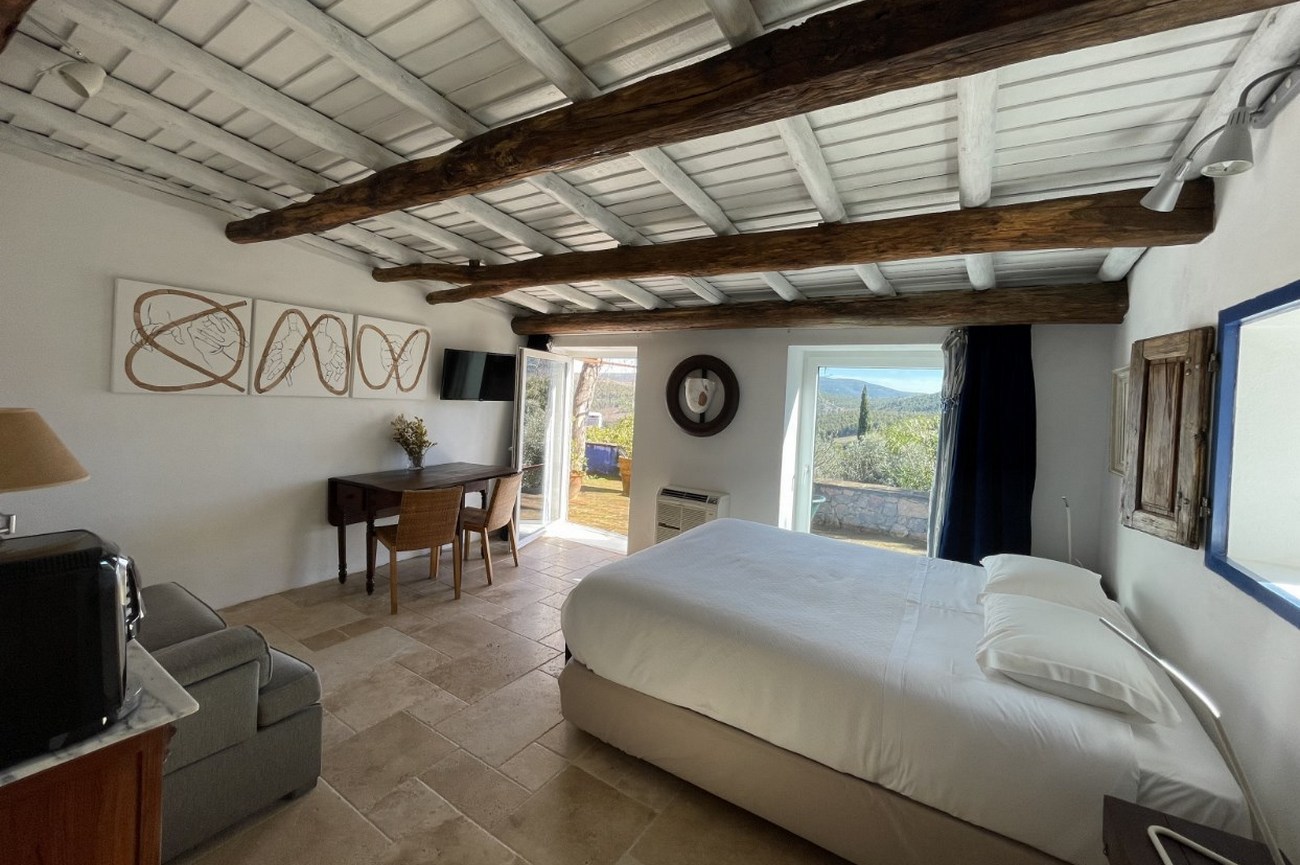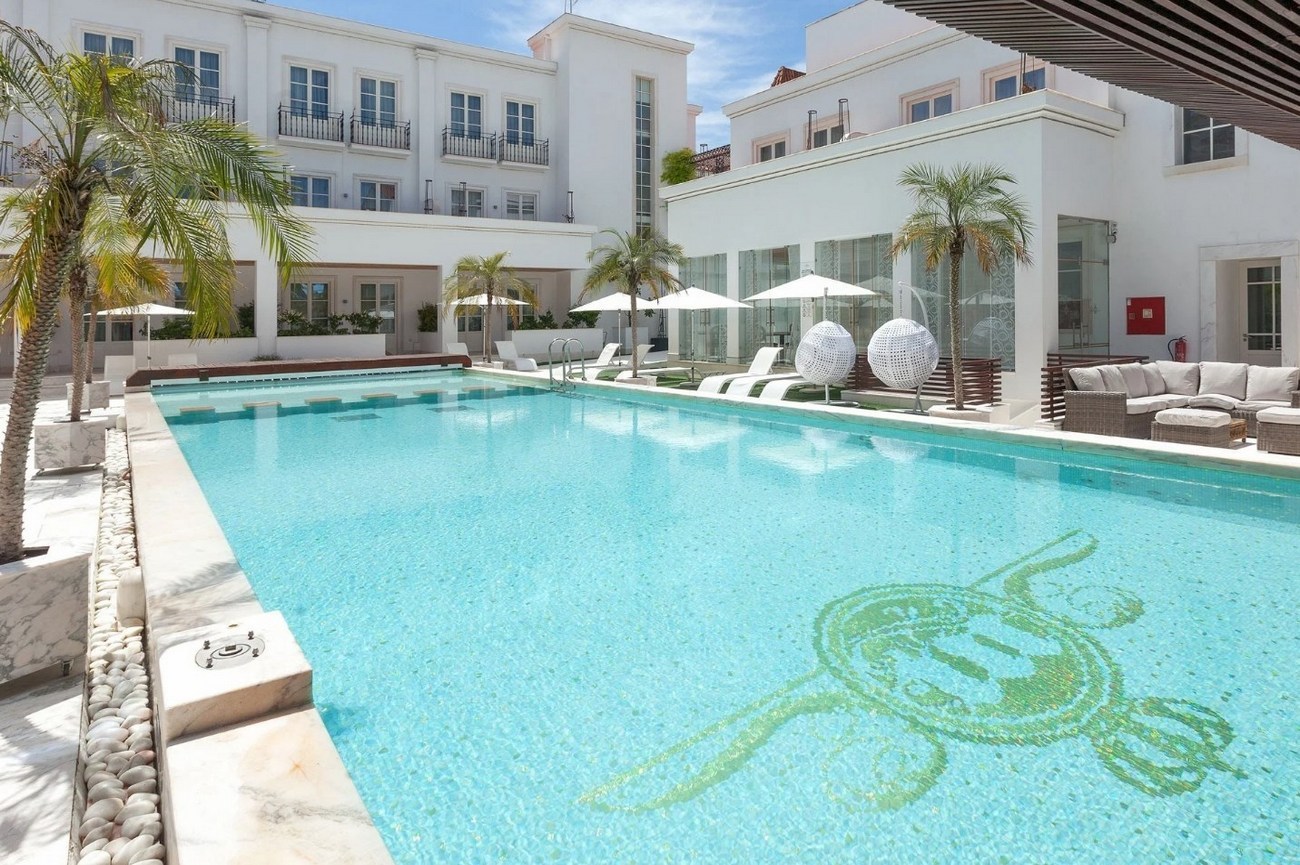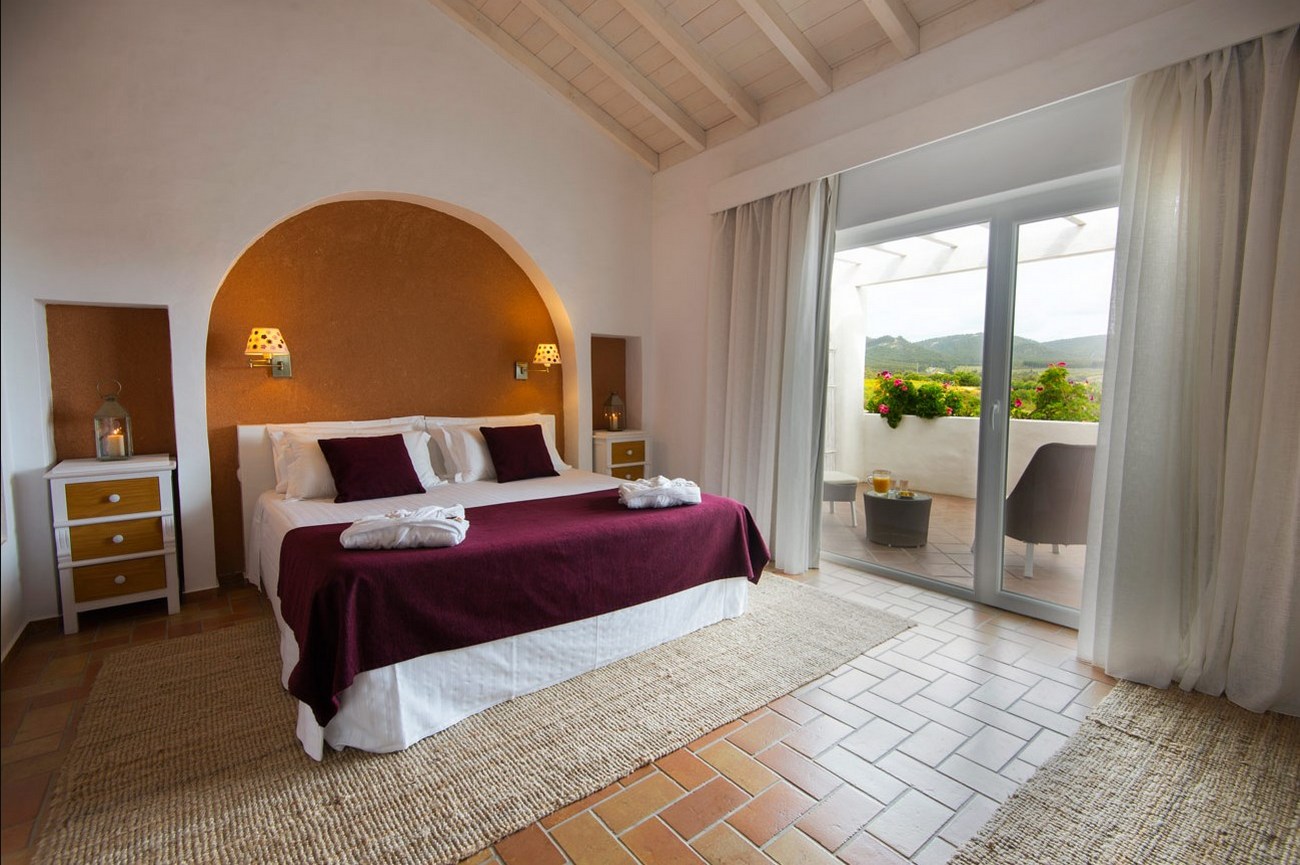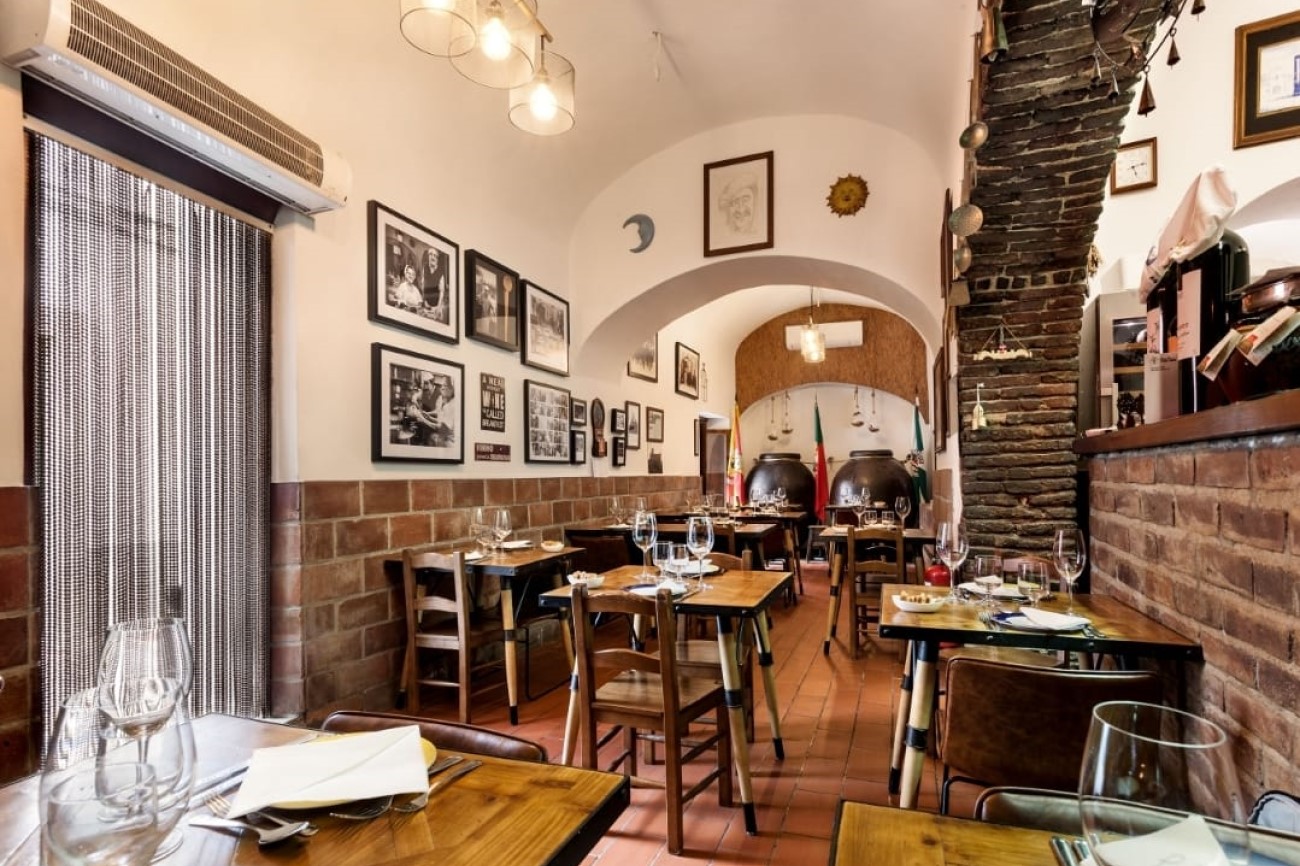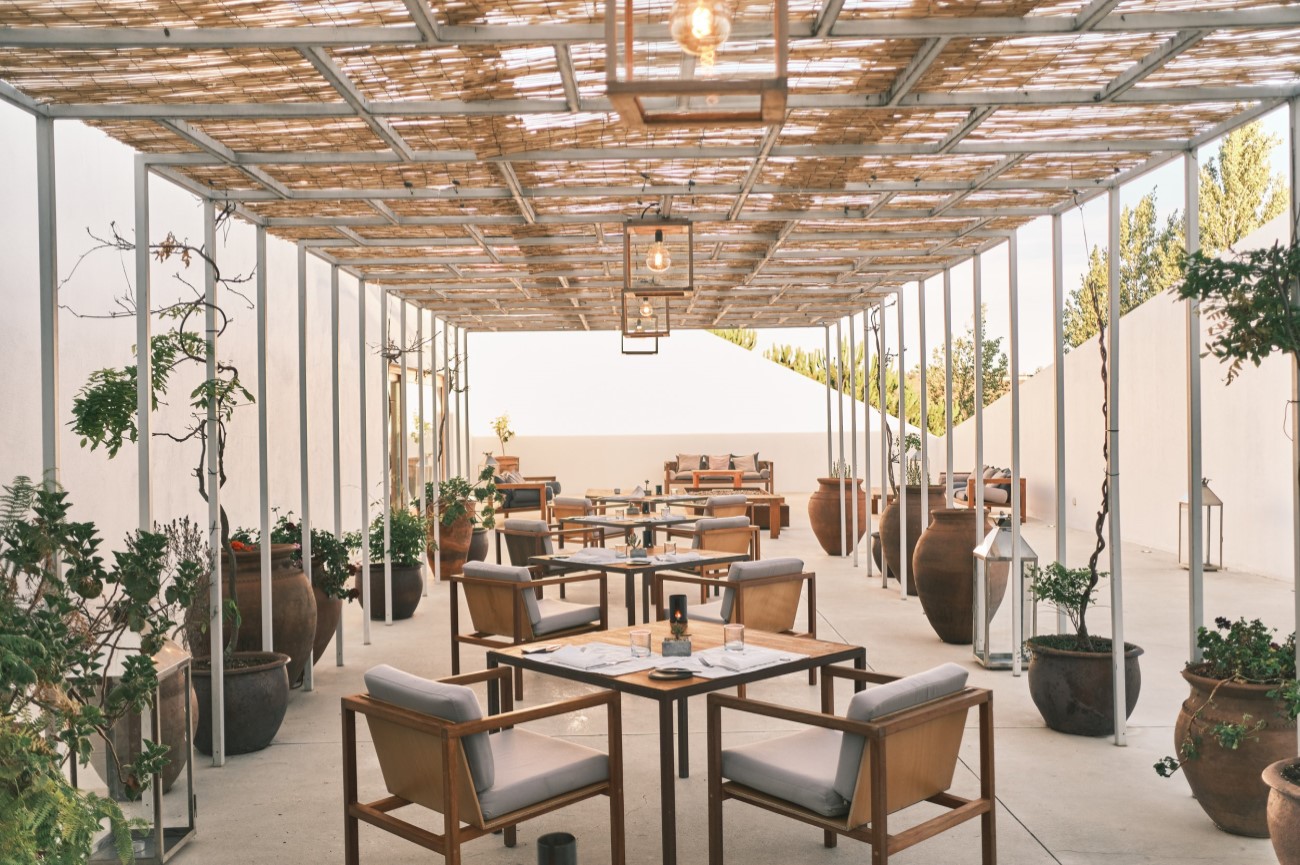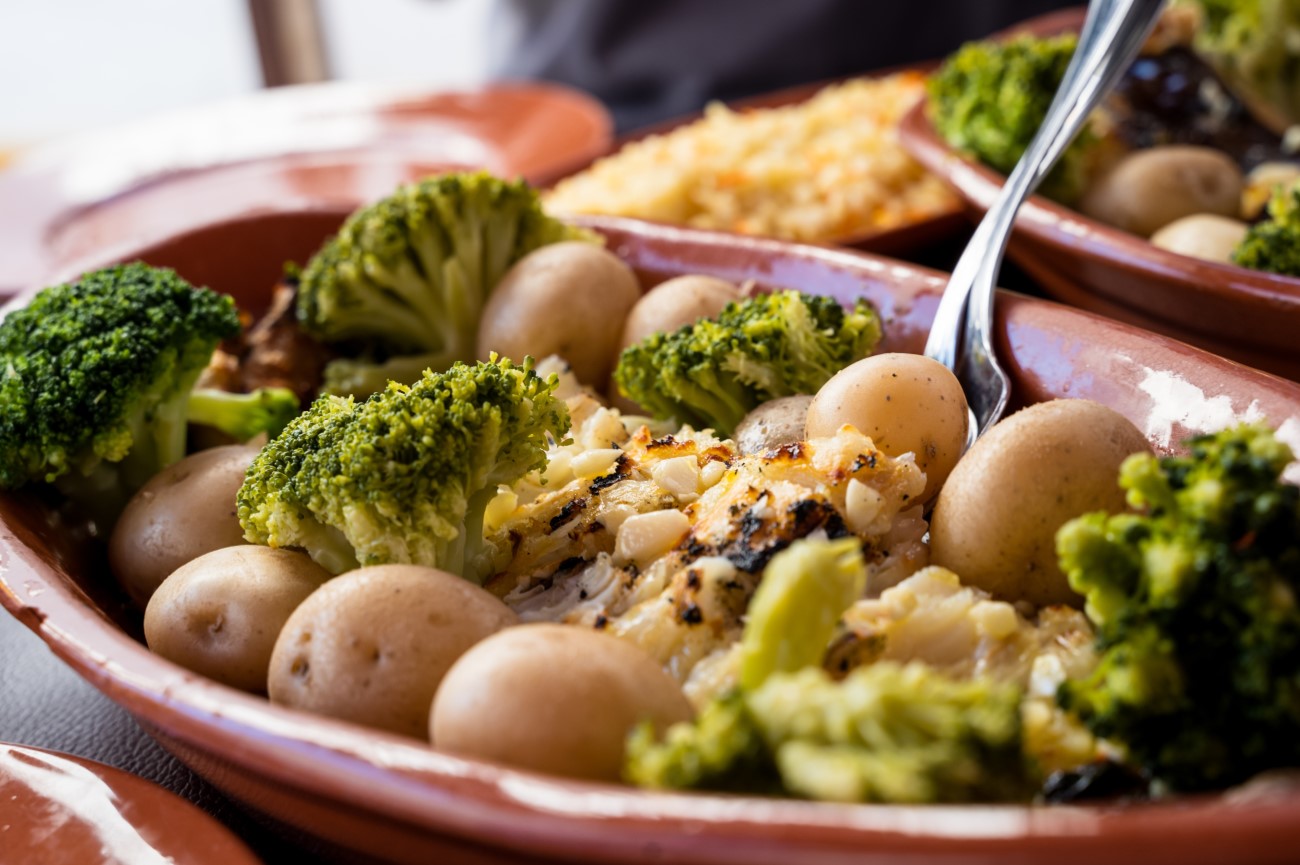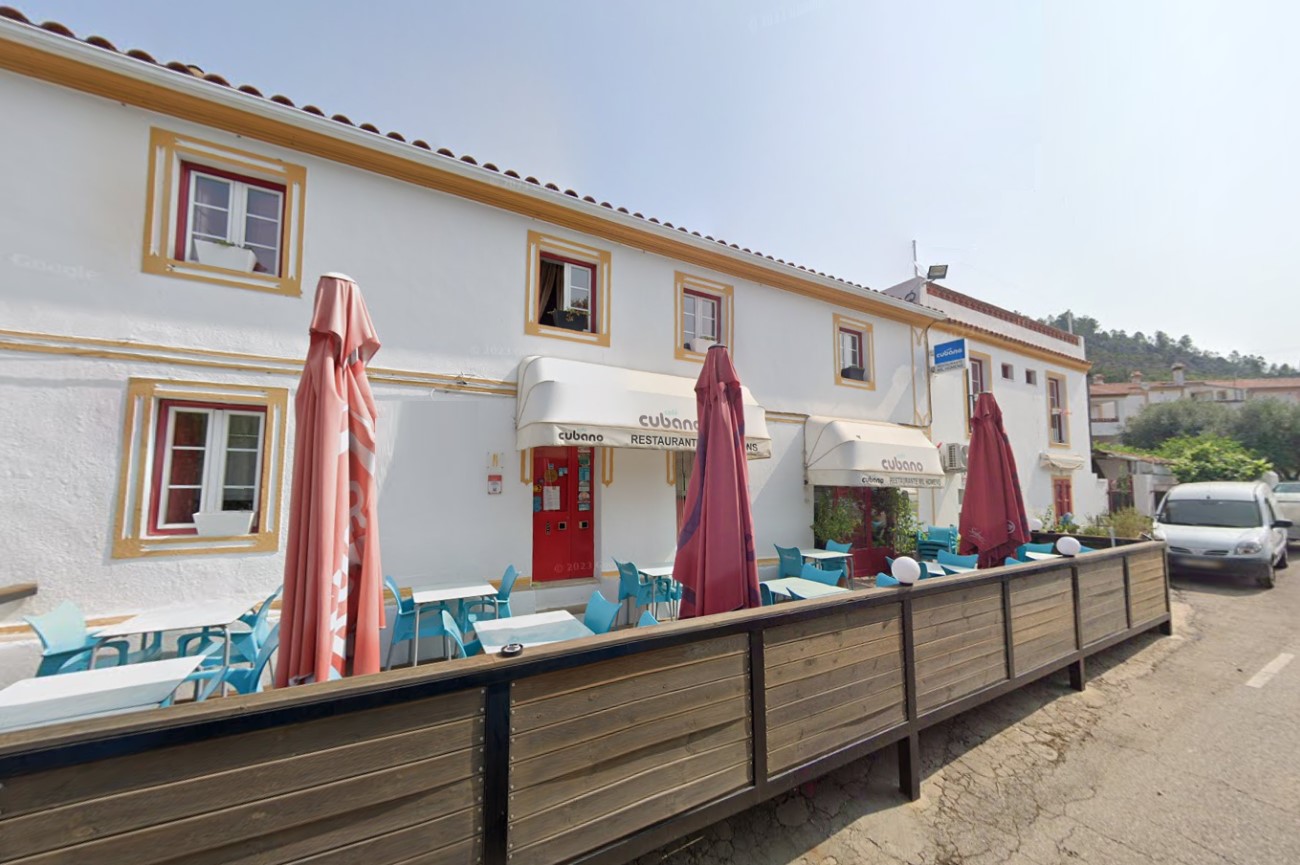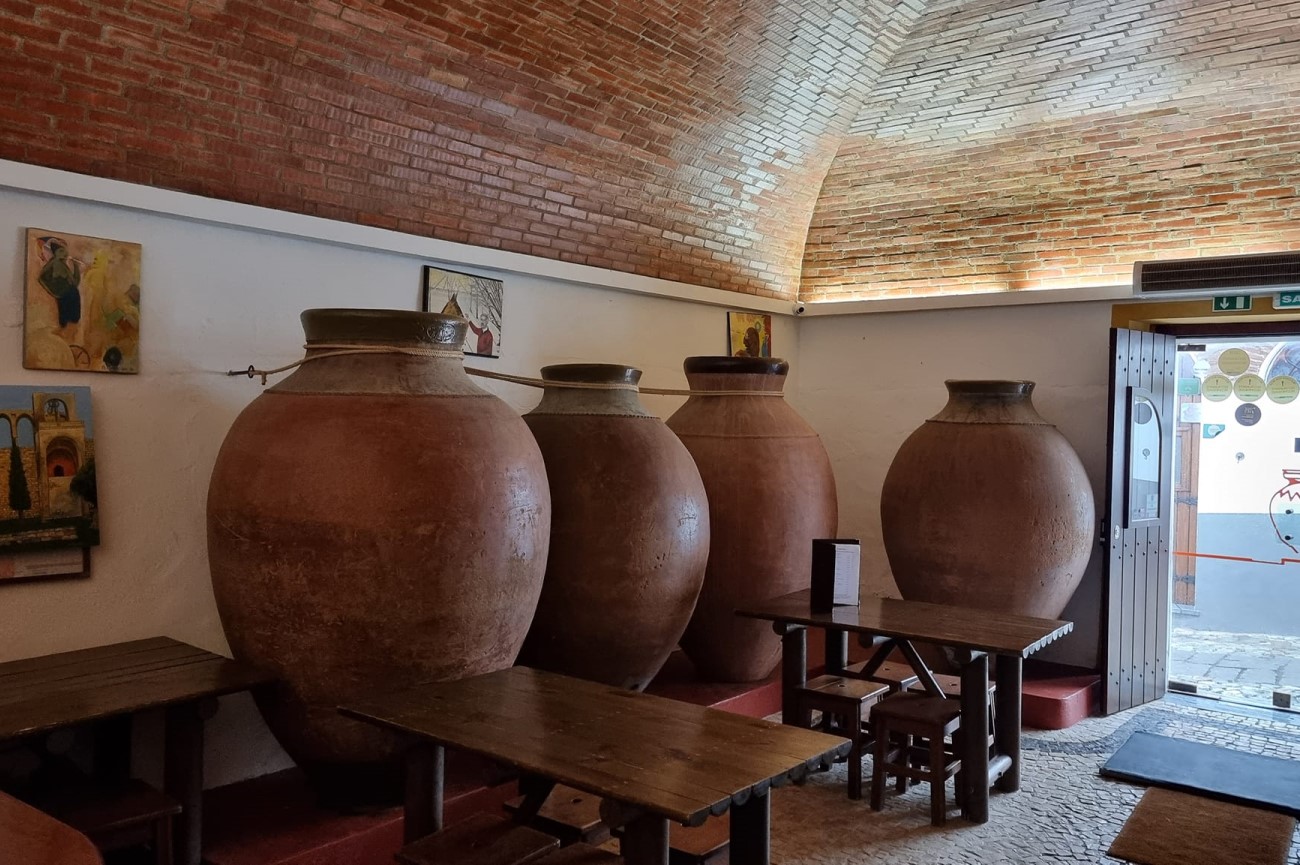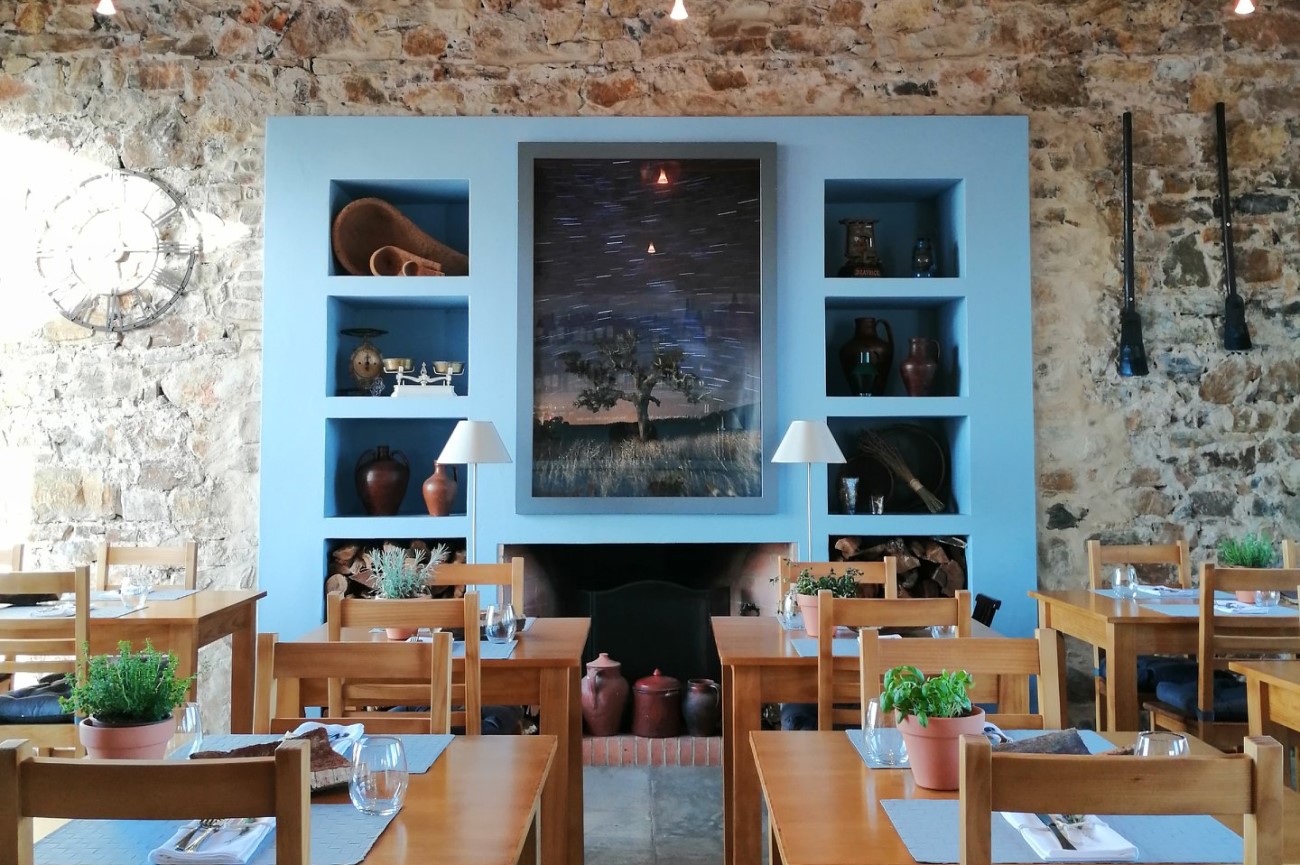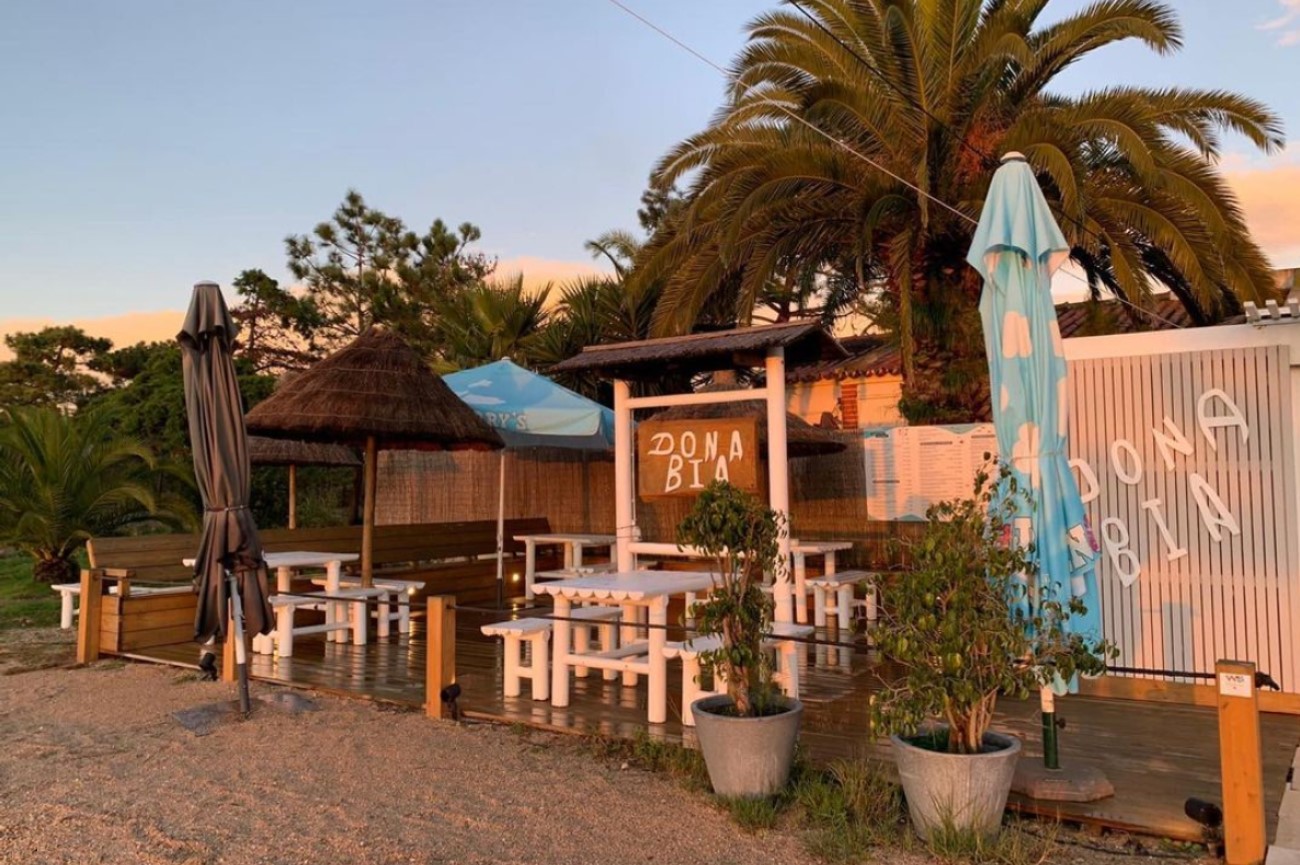The Ultimate Alentejo Guide

Between Lisbon and the Algarve lies the Alentejo, Portugal’s largest region. The name stands for “beyond the Tejo”, as it sits past the river Tagus, below Lisbon.
Vast fields dotted with olive groves, vines, and lonely cork trees is the image people have of the Alentejo, but there’s much more to discover in this balmy region. To the north, bordering Spain, you’ll find hilltop villages with castles and to the south, a beautiful coastline of quiet beaches.
If Faro is the gateway to the Algarve, in the Alentejo, all roads lead to Évora. This city is the heart of the Alentejo, a World-heritage site where Roman ruins meet Gothic churches and megalithic dolmens.
With history, beaches, and delicious wine, there are endless reasons to visit Alentejo. In this guide, we’ll introduce you to this stunning region and show you the best places to visit, as well as tips on where to eat and sleep.
Évora: The Capital Of The Alentejo
As the capital of the Alentejo, Évora is one of the best places to settle and explore the region. Its historic centre is a UNESCO-world heritage site, and it’s here that you’ll see the Roman temple, along with other attractions like the Cathedral and the University.
The city abounds with churches, but one of them, in particular, lures visitors with an eerie bone chapel—the Church of São Francisco.
We suggest spending one or two days in Évora, visiting monuments and getting lost in the cobblestone streets, before venturing further. Check out our Évora itinerary so you don’t miss the main attractions.
Note: If you’re travelling without a car, there are train connections from here to Beja and buses that will take you to most of the main towns in the Alentejo.
Towns worth visiting near Évora:
- Montemor-o-Novo - Set amidst the Alentejo countryside, this unassuming town stands out with its castle ruins towering over the village. Throughout the centuries, this was the site of several historic events, such as deciding Vasco da Gama's route to India. Surrounding the town, you'll also find several neolithic monuments.
- Arraiolos -
This town is famous for its hand-woven tapestries, which have been
around since at least the 12th century. Today there are carpet shops all
over Arraiolos and a small museum dedicated to this craft. Other
attractions include the castle with is unique circular structure, and
the Convento dos Lóios, a 15th-century convent fully decorated with blue
and white tiles.
- Evoramonte - On the road between Évora and Estremoz sits Evoramonte, a tiny village with around 500 residents. The highlight here is the castle with its cylindrical stone turrets. It's worth coming here to enjoy the views of the countryside and wander around the quiet cobblestone streets.
- Estremoz - Estremoz is a lively Alentejo town, with its central plaza lined with trees and outdoor cafés. Every Saturday, this plaza welcomes a traditional market selling anything from fruit to regional cheeses. It's also the land of marble, and you'll notice that all over, from the benches at the bus station to the town's church façades and the castle's keep. Part of the castle is now a hotel, but visitors are still welcome to go inside and explore its surroundings.
- Monsaraz - Enclosed by medieval walls, this hilltop village sits on the edge of the Alqueva Lake. Visitors come here to see its medieval castle, which provides incredible views of the lake and the surrounding olive groves. It's worth taking some time to explore the narrow streets and visit the Igreja Nossa Senhora da Lagoa. Nearby, there are several vineyards offering tours, as well as a river beach and an observatory where you can gaze upon the stars.
- Vila Viçosa - Like Estremoz, Vila Viçosa is also one of Alentejo's marble towns. The main attraction here is the Paço Ducal, a 16th-century palace featuring a stunning marble façade. For a while, this was the home of the Dukes of Bragança, the last noble family in Portugal. Today, the palace is open to visitors and includes several sections, from a carriage museum to an armoury room. The castle of Vila Viçosa also stands out with its circular towers. Inside there are two museums—the Museum of Archaeology and the Museum of Hunting.
- São Pedro do Corval - Set 5km away from
Monsaraz, this pocket-sized village has an active community of potters.
There are dozens of ceramic shops around here where you can watch the
artists at work or buy a souvenir, such as pots, plates or decorative
tiles.
Alto Alentejo: castles and hilltop towns
Mountains are the last thing people picture in the Alentejo but head north from Évora, and that’s what you’ll find. The region of Alto Alentejo features hilltop villages with castles that boast incredible views over the São Mamede mountains and the frontier with Spain.
- Portalegre is the centre of this northern section. The city itself is small, but it does offer a few interesting sites, like the castle and a tapestry museum. Textiles are a big tradition in the Alentejo, especially in the town of Arraiolos, but Portalegre gave them a modern twist. Through the years, many artists have worked with the factory to create a tapestry version of their art. Inspired by this collaboration, the city decided to create a museum where visitors can admire these elaborate pieces up close.
Towns worth visiting in Alto Alentejo:
- Marvão - Set in the North of Alentejo, Marvão juts out on a rocky crag amid the São Mamede Natural Park. Within this fortified town, there's a cluster of houses, outdoor cafés and a castle with spectacular mountain views from its battlements. It's worth visiting in the summer when the town organises a classical music concert inside the castle.
- Castelo de Vide - Surrounded by lush mountains, this tiny village stands out with its castle towering over a maze of whitewashed houses. For a long time, Castelo de Vide had a community of Jews, and you'll still find traces of it in the Jewish quarter. Other attractions include the Fonte da Vila and a Baroque church located at Praça de Dom Pedro V.
- Elvas
- Standing shoulder to shoulder with Spain, Elvas is famous for its
series of bulwarked fortifications, which earned the title of World
Heritage Site in 2012. For centuries, these star-shaped strongholds have
protected Elvas against numerous battles and also served as a military
base. Beyond the fortresses, there's a medieval castle, a few museums
and a beautiful cathedral.
Baixo Alentejo: archaeological finds and secluded villages
Touching the Algarve, this is the southern section of the Alentejo, a region punctuated by small whitewashed villages and wheat fields.
Beja is the main city of Baixo Alentejo. Like Évora, it also has Roman roots but receives only a fraction of visitors, leaving you plenty of room to explore the streets on your own.
Most attractions in Beja are right in the centre, such as the castle and the Regional Museum, housed in a former convent. A bit further, you can visit the city park and the Roman ruins of Pisões.
Towns worth visiting in Baixo Alentejo:
- Mértola - Perched on a hill above the Guadiana River, Mértola is one of the most picturesque villages in the Alentejo. Its medieval streets hold an impressive collection of museums which feature Roman ruins and an Islamic residence. For the best views of the river and the town, make sure to climb up to the castle.
- Serpa - Serpa is a tiny whitewashed
village with a quiet atmosphere. Standing above it all is the castle,
which offers views over the surrounding countryside. It's famous for its
delicious creamy cheese, which you can purchase in one of the many
queijarias (cheese shops). The town also has a clock museum and a
small modern art gallery which opened in 2019.
Alentejo Litoral: beaches and hiking trails
This is where the Alentejo meets the ocean, a wild coast made up of cliffs and long sandy beaches that stretch from Troia to Odemira.
The
beaches of the Alentejo are among the finest in the country, and yet they
remain largely unexplored by visitors. Even at the height of summer, you
can still find a quiet patch of sand here. Some of the best beaches in
the area include Praia da Comporta, Praia do Malhão, Praia do Almograve,
and Praia da Samoqueira.
Along the coast, there are also two
reservoirs and a natural park famous for its hiking trails. There’s the
Sado Reservoir near Troia, a meeting point for dolphins.
Further down, the Lagoas de Santo André and its wetlands offer the perfect setting for birdwatching and canoeing. And then there’s the Costa Vicentina, a rugged coastline that stands between the Alentejo and the Algarve. Its beaches attract a crowd of surfers, and the high cliffs provide many opportunities for scenic walks.
Towns worth visiting in Alentejo Litoral:
- Troia - Standing amid the Sado Estuary and the Atlantic, this sandy peninsula lures you in with its pristine beaches and luxurious hotels. There are plenty of entertainment options here, including a casino and a golf course. Troia is also a meeting point for dolphins, and it's worth taking a boat trip to observe them up close. You can drive here from Comporta or take the ferry boat from Setúbal.
- Comporta - A few miles south from Troia is this stunning coastal town. Most people come here for the beach and to enjoy a seafood meal in one of the many local restaurants. It's also possible to take horse riding lessons or tour the vineyards of Herdade da Comporta.
- Alcácer do Sal - Set on the banks of the Sado river, Alcácer do Sal is an old fishing town surrounded by rice paddies. There are a few historical sites here, including an Archaeological museum and a Moorish castle, which has been a hotel since 1998.
- Vila Nova de Milfontes - Vila Nova de
Milfontes is one of the many towns on the Costa Vicentina, a
coastal stretch lined with beaches and numerous hiking trails. There are
three beaches near the centre, some of which face both the ocean and
the Mira river that flows here. Further out, there are many more
beaches, including one on an island which you can access by boat.
Besides swimming, you can take a surf lesson or rent a kayak to sail
along the river.
The best time to visit Alentejo
The weather in Alentejo tends to be very hot and dry compared to other regions in Portugal. In the summer, temperatures can reach as high as 37ºC, especially in the south. The best time to visit Alentejo is during the spring, between March and June or in early September, when it gets a bit cooler.
How long to stay in Alentejo
You should allow at least one day to explore Évora and then take a few day trips around the region. A week is enough to see most of the main towns like Estremoz, Mértola, Marvão and Monsaraz. With a few extra days, you can also spend some time on the beach. If you want to be near the coast, however, it’s easier to travel from Lisbon. Of course, you can create your own Alentejo itinerary, maybe you’ll stick to a week of sunbathing, or maybe you prefer hiking along the mountains in the north, or you can always pick both.
Alentejo Cuisine
The Alentejo cuisine features many traditional delicacies like porco preto (black pork) and cação (dogfish). Bread is an essential part of the local diet, and it’s the main ingredient of a dish called açorda. This dish is famous throughout the country, but it’s mostly eaten in the Alentejo. Besides bread, it includes coriander, garlic, olive oil and poached eggs. There are several varieties of açorda, but the most popular one is Açorda de Marisco, made with shrimp and other shellfish.
Most restaurants in Alentejo will serve at least one pork meal. You can have it by itself like a platter of Plumas de Porco Preto or mixed with clams in the famous dish Carne de Porco à Alentejana. By the coast, seafood takes over the menu, with clams, barnacles and oysters on offer.
The regional cheese and wine are also worth mentioning. Some of the best wines in Portugal come from the Alentejo, most of them from Reguengos de Monsaraz and Borba, and the creamy cheese from Serpa is the perfect spread for Alentejo bread.
Alentejo Wineries
There are vineyards scattered all over Portugal, and the Alentejo is no exception. The region is famous for its full-bodied red wine and sweet white wine.
The Alentejo wineries are usually part of a Quinta or Herdade. These rural estates offer tours and wine tasting sessions, and some of them even provide accommodation.
In Évora, you’ll find the headquarters of Rota dos Vinhos do Alentejo, the Alentejo Wine Route. Here you can sample wines, grab a map of the route, and schedule visits to the wineries.
The best wineries near Évora are Adega da Cartuxa, Monte da Ravasqueira, and Herdade do Esporão. This last one also includes a Michelin-star restaurant and a wine bar, where you can have a personal tasting session in case you missed one of the tours.
In the north, Adega Mayor draws visitors with its unique building designed by Portuguese architect Siza Vieira. Here you can do wine workshops and participate in the harvest when the season comes.
Down south, Herdade dos Grous offers a 5-star hotel amid vineyards and olive trees. Guests can enjoy visits to the wine cellar, as well as guided tours around the farm on foot, by horse or even in a hot air balloon.
Alentejo Activities
Besides tasting wine, there are many activities you can indulge in Alentejo. Along the Costa Vicentina, you’ll find many routes for hiking and cycling.
The beaches by the Atlantic provide good opportunities for water sports like surf and kayaking, while the river beaches, with its calm waters, are ideal for a relaxing swim. Near the Sado Reservoir, in Comporta, you can ride horses on the sand with Cavalos na Areia.
To learn more about Alentejo’s heritage, a hands-on workshop organized by Rotas dos Compadres will teach you a variety of skills, from bread baking to mural painting.
Best Alentejo Hotels
One of the best ways to explore the Alentejo is to base yourself in Évora and then drive around the region. We suggest staying at Albergaria do Calvário, a family-run hotel located in a quiet neighbourhood near the city centre. It offers 22 guest rooms, a delicious homemade breakfast, and an outdoor courtyard where you can enjoy a glass of wine late at night. If you're bringing the car, you can park here for free.
As you travel through the Alentejo, you might decide to stay the night in another town or even spend a week in a specific region. Here are a few of the best hotels in the Alentejo:
- Convento do Espinheiro - Just outside of Évora is this 5 star hotel housed in a renovated 15th century convent. It offers 8 hectares of beautiful gardens, indoors and outdoors swimming pools, tennis court, spa, 2 restaurants, piano bar and a church. The rooms are modern and luxuriously furnished.
- L’AND Vineyards - A quiet retreat near Montemor-o-Novo, this 5-star hotel features a spa, two pools and a Michelin-star restaurant. The modern white building is a stark contrast against the fields of vineyards that surround it. You can arrange a wine course here or schedule visits to nearby wineries.
- Pousada Castelo de Estremoz - Set in a 14th-century castle, this hotel stands out with its tall marble tower. Inside, the decor takes you back in time with antique furniture and golden frames decorating the rooms. Some rooms have four-poster beds, so you can sleep as the royals did. There's also a restaurant, an outdoor pool and a small garden where you can go for a quiet stroll.
- Herdade dos Grous - A few miles away from Beja, you'll find this quiet countryside estate surrounded by an artificial lake. Here, you can go horseback riding, take a birdwatching tour and learn everything about organic farming. Surrounding the hotel, there are also olive plantations and vineyards that produce award-winning wines.
- Quinta do Barrieiro (near Marvão) - Art and nature come together in this rural estate amidst the São Mamede Natural Park. Guests can stay in one of the houses that range from one bedroom to three bedrooms. All of them include a kitchenette, a living room and spectacular mountain views. Aside from the houses, there's also a pool, a natural lake and a sculpture park featuring pieces by the artist Maria Leal da Costa.
- Alentejo Marmoris (Vila Viçosa) - A few steps away from the Paço Ducal in Vila Viçosa, this luxurious hotel stands out with its marble decor. Every room features a marble bathroom, and some of them offer a private terrace. There's a restaurant on-site that serves sophisticated meals using locally-sourced ingredients. Guests can also enjoy the two swimming pools or relax in the spa, which offers a variety of treatments, from stone massages to hydrotherapy.
- Herdade do Amarelo (near Vila Nova) - Close to Vila Nova de Milfontes, you'll find this unique farm stay dating back to the 19th century. There are six types of suites, all featuring hot tubs and mountain views. Guests can follow the hiking trails across the property or enjoy the diverse amenities, which include a spa and a salt-water swimming pool.
Best Alentejo Restaurants
- Taberna Tipica Quarta Feira (Évora) -Set in Évora's old town, this local tavern doesn't have a menu, so you'll have to go with the flow. Pick a drink and then wait for the assortment of dishes, which usually includes appetizers, a main dish and a dessert. Make sure to reserve ahead and bring cash with you.
- L'and Vineyards (Montemor) - Set on the outskirts of Montemor is this high-end restaurant surrounded by vineyards. The tasting menu features dishes from the land and the sea, all using locally-sourced ingredients. Make sure to pair your meal with a selection of wines curated by the house sommelier.
- Venda Azul (Estremoz) - The lively atmosphere of Venda Azul is reason enough to visit Estremoz. The restaurant offers a daily lunch menu, but the highlight here is the grilled black pork. The portions are quite generous, so make sure to bring a friend or two to help out. To finish off, the staff will offer you a shot of abafado or ginjinha.
- Mil Homens (Marvão) - This family-run restaurant has been delighting visitors with its cuisine since 1967. You'll find it in Portagem, a small village near the Sever river on the way to Marvão. Highlights include the sarapatel soup and the lamb stew.
- Molhó Bico (Serpa) - Set in a former wine cellar, Molhó Bico offers a taste of the Alentejo cuisine to anyone who visits Serpa. The menu includes Iberian Pork, lamb stew and the açorda, a typical bread soup from this region.
- Alento (Vila Nova) - In the heart of Vila Nova de Milfontes is this contemporary restaurant. The menu features a selection of innovative dishes, all based on regional ingredients. Most meals are prepared in a wood-burning stove, and there's always fresh seafood available which you can see before you order.
- Dona Bia (Comporta) - On the way to Comporta, you can grab a meal in this local restaurant. Specialities include rice dishes, seafood and fresh grilled fish. The portions are pretty big, so make sure to bring a friend to share.


